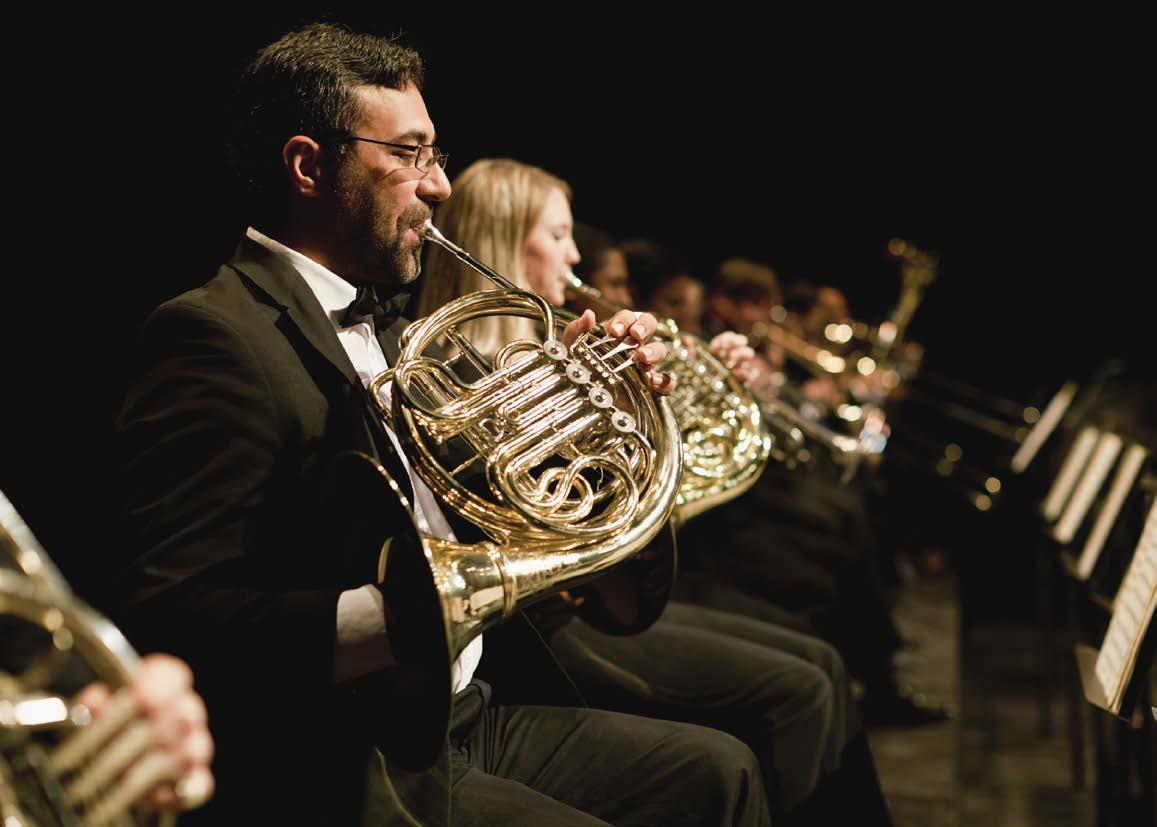



Connect with the Spartanburg Philharmonic!

See photos and video of the symphony on stage, backstage, and behind the scenes. Learn more about music and musical life, and stay up-to-date about our upcoming events. Like, Follow, and Watch







See photos and video of the symphony on stage, backstage, and behind the scenes. Learn more about music and musical life, and stay up-to-date about our upcoming events. Like, Follow, and Watch

Zimmerli Series ( page 35)
Espresso Series ( page 24)
Bluegrass Spartanburg ( page 26)
August
Youth Orchestra ( page 53)
Music Sandwiched In ( page 23)
Special Events ( page 51)
Event Date Venue
BellaNova: Electric Strings
September
Wirewood
From the New World
Carolina Players Band
Espresso no. 1: Serioso
October
Ensemble Radieuse
Dan Tyminski Band
Foothills Oompah Band
Music Trail LIVE!
SPYO: Fall Concert
November
Fayssoux McLean
Philharmonic Jazz
Espresso no. 2: Jazz Jolt
Cellosmith
December
Philharmonic Brass
Wayne & Kristin Scott Benson and Friends
8/23 Spartanburg County Library
County Library
County Library
9/29 Chapman Cultural Center
10/18 Spartanburg County Library
SpartanburgPhilharmonic.org/ Events
County Library
SpartanburgPhilharmonic.org/ box-office-venues
Twichell Auditorium at Converse University Box Office Hours
10:00 AM - 2:00 PM, M-Th
10:00 AM - 1:00 PM, F
(864) 596-9018
580 East Main Street
Spartanburg, SC 29302
Zimmerli Series & Youth Orchestra
Individual Tickets
Chapman Cultural Center Box Office Hours
10:00 AM - 5:00 PM, T-Th
10:00 AM - 2:00 PM, F
Closed Mon
(864) 583-2776
200 East Saint John St. Spartanburg, SC 29306
Espresso & Bluegrass Series
Individual Tickets
Spartanburg Philharmonic Administrative Offices
9:00 AM - 5:00 PM, M-F
(864) 948-9020
200 East Saint John St. Spartanburg, SC 29306
Season Tickets
Restrooms: Restrooms in Twichell Auditorium are located off of the first floor lobby and next to the handicap accessible entrance in the auditorium. Restrooms at the Chapman Cultural Center are located to the left and right of the main entrance lobby.
Seating: Twichell Auditorium uses a reserved seating system for our Zimmerli Series concerts, so please keep your ticket with you at all times to verify section and seat specifics should there be any confusion. Chapman Cultural Center also uses a reserved ticket system for Bluegrass Spartanburg. For our Espresso Series, Chapman uses a General Admission system and does not reserve seating.
Late seating: For the listening pleasure of our audiences, late arriving patrons will not be seated while music is being performed. Latecomers will be seated at the first appropriate pause in the program (typically during applause). Additionally, we ask that patrons who must leave prior to the end of a performance exit only between selections if at all possible.
Ticket donation: We are unable to issue refunds for unused tickets. However, if you are unable to attend a concert, we encourage you to donate your tickets back or give them to a friend. When you donate your tickets to the Spartanburg Philharmonic, you not only receive a donation tax receipt, but you also share your seat with another music lover. If you would like to give in this way, please notify our ticket office at least 24 hours prior to the performance.
If a concert is canceled or rescheduled due to inclement weather, a tax letter will be provided for any ticket returned within 24 hours after the original concert date.
Accessibility: The Spartanburg Philharmonic is committed to providing an environment that is welcoming and inclusive to all patrons. Persons requiring assistance are encouraged to call the respective box offices for direct assistance in purchasing the appropriate tickets.
Please note that Twichell Auditorium does not currently have an elevator for balcony seats. Wheelchair accessibility is located at the side entrance of the auditorium. The Chapman Cultural Center is fully ADA compliant, and the theater has state-of-the-art hearing assistance technology. In addition to traditional amplification devices, such as headphones, the theater is equipped with “The Loop” technology.
Food/Beverage: No food or drink, other than bottled water, is allowed in Twichell Auditorium.
Cameras, cell phones, recording devices, watch alarms, and similar devices: To ensure a quality experience for everyone, the use of flash-photography or video/audio recording equipment is strictly prohibited. Patrons are asked to turn off or mute (not just turn to vibrate) all personal electronic devices prior to the performance.
In
Prior to the performance, we request that you familiarize yourself with the locations of all exits in case of an emergency. If the power to the building should be interrupted for any reason, generators will begin within 10 seconds for lighting.
The Mission of the Spartanburg Philharmonic is to enrich, inspire, and educate through live performances of high-quality music.



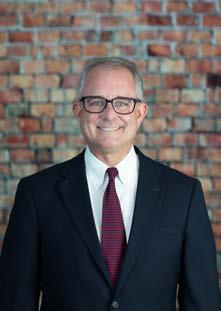




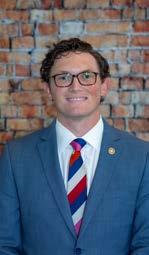

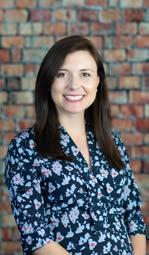

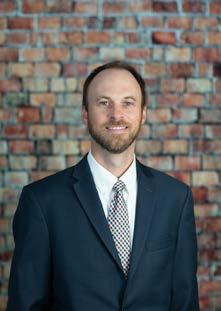


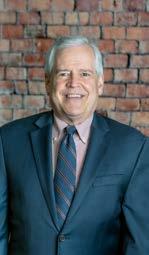






New Beginnings. There is excitement in the air as we welcome John Young Shik Concklin as the 10th Music Director to lead Spartanburg Philharmonic. In our 95th Season, John’s debut as Music Director will include dynamic guest artist Xavier Foley on Bass, a commissioned piece composed by our own Peter B. Kay and conclude with the dramatically beautiful and ubiquitous Dvorak’s 9th “New World” Symphony.
The Process. Like most conductors, John is first and foremost, a musician. He is an accomplished viola player and he performed in many orchestras and ensembles throughout his career. John received his undergraduate from Vanderbilt University and his Masters of Conducting at Yale University. While at Yale, John’s first “paycheck” from conducting was to prepare to be a cover conductor for our 8th Music Director, Sarah Ioannides, who was imminently due to deliver a baby. The call did not come.
April 2018. John led our orchestra as a guest conductor for two family-friendly, sold-out John Williams concerts. Many of us remember his winsome presence on stage and the delightful orchestral experience.
April 2022. As one of nine Music Director Finalists, John commanded the podium to conduct Mahler’s 1st Symphony, an unforgettable concert that concluded in a rousing 10-minute standing ovation. The orchestra had never sounded better. It was awe-inspiring.
September 2022. John received a call to cover conduct for a finalist unable to continue 4 days before the concert. He drove from New Haven, Connecticut to open our 94th Season with two rehearsals and a flawless concert.
The Decision. Throughout the two-year process, the 10 members of the Music Director Search Committee were impressed with John’s artistry, intellect, insightful leadership, and vision for a next century Spartanburg Philharmonic. One of our veteran musicians said that he was “the best conductor Spartanburg Philharmonic has ever seen.”
The surveys from the board, staff, audience, and musicians concurred. Off the podium, the committee was struck by John’s authentic commitment to music education and his transformative work with afterschool youth through the Atlanta Music Project. John and his wife, Lauren Maxwell, who is a Converse University graduate, are residents of the Upstate and have a deep respect and understanding of the challenges of our musicians. In short, John gets us.
Now What? The very best welcome we could give John Concklin is to fill the seats of Twichell Auditorium with concertgoers who can energize the hall. Please join us in collectively telling our friends and neighbors, newcomers, and everyone we see – about John - the fresh, new face of Spartanburg Philharmonic who won us over! Make the Zimmerli Series a priority on your calendar. You don’t want to miss it!
We Are Music.
Karen Parrott President of the Board of Directors Kathryn H. Boucher Executive Director

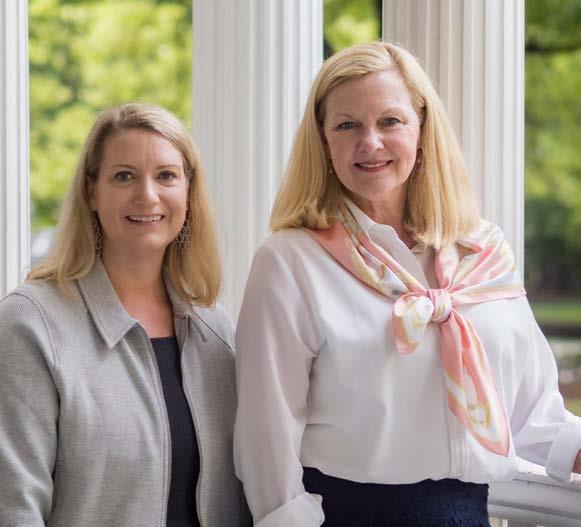

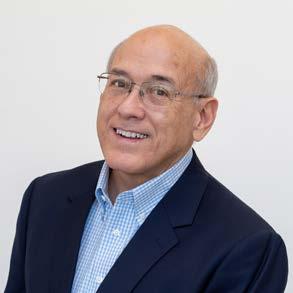

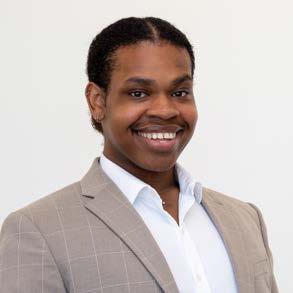
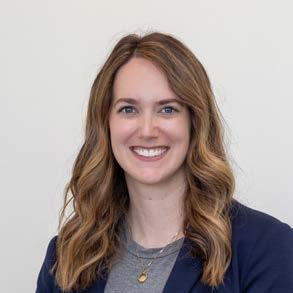




The goal of the Spartanburg Philharmonic’s Orchestra Committee is to amplify our musicians’ voices throughout the organization and ensure that communication runs smoothly among musicians, staff, and board. Committee members provide a musician’s insights on operational issues as well as artistic policies like outlining a new process for how to select the next concertmaster. We also mediate complaints and conflicts among musicians and staff. Some members serve on multiple committees – we had two members serve on the recent Music Director search committee – to facilitate communication among groups. At least one member of the orchestra committee attends each board meeting to convey the considerations and concerns that are unique to the world of working musicians. This participation ensures that musicians are a part of the decision making at the highest level of the organization.

Orchestra Committee members are elected from among the core musicians of the orchestra, those members who




have won their spot in the orchestra through audition. We represent most of the instrument families – strings, brass, and woodwinds with current members – and have experience playing in more than a dozen orchestras across the region which helps us stay current with best practices from the field. Our day jobs range from college professor to middle school orchestra director to financial advisor to work-from-home mom, and these varied experiences bring diverse perspectives to our decision making. We are proud to represent the musicians of the Spartanburg Philharmonic and are deeply grateful for the tremendous support from the community, the board of directors, and the staff who have kept the organization financially and operationally sound. We look forward to continuing to support our fellow musicians as we make fantastic music this season and for many, many seasons to come.


When arts and businesses partner, everyone profits. With corporate partnerships, our concerts and events provide invaluable exposure to prospective and current clients, educate the public about your business initiatives, offer networking opportunities with clients, and provide benefits for employees.
For full details regarding our Corporate Partnership packages, please contact:

 Kathryn Boucher, Executive Director
Kathryn Boucher, Executive Director
kathryn@spartanburgphilharmonic.org



 FOUNDATION
FOUNDATION
Donations given to Chapman Cultural Center’s Annual United Arts Fund supports Spartanburg Philharmonic through a General Operating Support Grant.
Chapman Cultural Center is a proud supporter of Spartanburg Philharmonic and their mission.


We gratefully acknowledge the following donors who made generous commitments to the Spartanburg Philharmonic. This list reflects gifts received July 2022 through June 2023.
Benefactor ($25,000+)
The Balmer Foundation
Mr. and Mrs. William Barnet III
Mr. and Mrs. George Dean Johnson, Jr.
Mrs. Nelly Zimmerli
Maestro ($10,000-$24,999)
Anonymous
Dr. Barry Bodie and Ms. Laurel D. Johnson
Mr. and Mrs. John Cribb
An Evening of Divertimentos & Dressage
Mr. and Mrs. Roger Habisreutinger
Alfred Moore Foundation
Mr. and Mrs. Stephen P. Parrott
Virtuoso & Podium ($5,000-$9,999)
Mr. and Mrs. Andrew Babb
Ms. Laura Henthorn
Mr. and Mrs. John S. McBride, Jr.
Mr. and Mrs. Wiley North
Baton ($2,500-$4,999)
Mrs. Mac Cates, Jr.
Mr. Thomas Hudgens
In Memory of CRI, M.D.
Mr. and Mrs. Paul Lehner
Mr. and Mrs. V. C. McLeod, III
Mr. and Mrs. Don Miles
Mr. and Mrs. Thomas P. Nederostek
Dr. and Mrs. Rick Orr
Mr. and Mrs. H. Peter Theiler
Mr. and Mrs. Geoffrey Wilson
Principal ($1,000-$2,499)
Mr. and Mrs. Stanley Baker
Mrs. Susan H. Baker
Ms. Karen E. Bjelland
Ms. Kathryn H. Boucher
Ms. JoAnn Bristow
Mr. Lawrence P. Butka & Mr. Gregory Sigg Murphy
Mr. Jason Bynum
Dr. and Mrs. Ernest Camp III
Mr. Mark Carlson
Mr. James Cheek
Mr. and Mrs. Jerry Cogan
Mrs. Celia Cogdell
Mr. and Mrs. Ken Deems
Mr. and Mrs. Frederick B. Dent, Jr.
Mr. and Mrs. Ray Dunleavy
Mr. and Mrs. David Ellis
Dr. Mark Ferguson
Ms. Joan B. Gibson
Mr. Peter Grzan
Drs. Chandra & Boone Hopkins
Dr. Leslie W. Howard, Jr.
Fellow Musician ($500-$999)

Laura Allen and Roger Sullivan
Mr. and Mrs. Tom Barnet
Scott and Rhonda Beckey
Mr. and Mrs. James Burchfield
Mr. and Mrs. Halsey Cook
Allen and Sharon Doyle
Mr. and Mrs. Lawrence Flynn, Jr.
Mr. and Mrs. Brandt Goodwin
Mr. J. Mark Hayes, II
Dr. and Mrs. David A. Holt
Mrs. Patricia Hudgens
Mr. and Mrs. Chip Johnson
Dr. Peter B. Kay & Jenny Bonner
Mr. and Mrs. Robert Lyle
Mr. and Mrs. William C. Mayrose
Dr. and Mrs. Louis Knoepp, Jr.
Dr. Ohmar Land
Clint and Samantha Larkins
Dr. and Mrs. Gene Lassiter
Mr. and Mrs. Lindsay Little
Dr. and Mrs. Caleb Loring, IV
Col. and Mrs. Robert N. Maddox
John McAllister & Katee Castleman
Ms. Judy McCravy
Mr. E.T. McLean
Dr. and Mrs. Peter Sereque
David and Jennifer Smart
MG(R) Edwin E. Spain, III & Mary B. Spain
Mrs. Tamela Spann
Mrs. Jack Steinberg
Mr. and Mrs. Eliot Stone
Mr. and Mrs. Chris Strickland
Mr. and Mrs. Walter Sunderlin
Mr. and Mrs. Peter Weisman
Mr. and Mrs. Donald Wildman
Bob and Karen Mitchell
Dr. Melinda Moretz
Mrs. PJ Morrow
Mr. and Mrs. John R. Murphy
Mr. and Mrs. Walter Oates
Mr. and Mrs. Walter Oliver IV
Ms. Joy Shackelford
Ms. Johanna Lewis & Mr. Richard Spiers
Mr. Peter Stegemann
Mr. and Mrs. Joseph B. Traywick, II
Mr. and Mrs. Robert Troup
Mr. and Mrs. Marshall T. Walsh
Mr. and Mrs. Taylor White
Dr. Meisha Whitlock
Dr. and Mrs. Stefan Wilkes
Martha and Clarke Blackman
Mr. and Mrs. Jan Caldwell
Mr. and Mrs. David Cecil
Mr. and Mrs. Joe Cheatham
Ms. Elaine T. Freeman
Mr. Thomas Frick
Mr. and Mrs. James Glenn
Mrs. Lucy Hummers

Ms. Kathy J. Allen
Mrs. Ruta Allen
Patty and C. Mack Amick
Mr. David Anderson
Ms. Frances J. Bagwell
Ms. Pat Wilks Battle
Mrs. Margaret Baughman
Mr. and Mrs. Charles Baxter
Cyndi and David Beacham
Ms. Cathy L. Beck
Diana and Alden Berti
Mr. and Mrs. Louie W. Blanton
Mr. and Mrs. Thomas Blexrud
Ms. Harriet Bolen
Mr. Robert Borden
Mr. and Mrs. Tim Brannon
Mrs. Susan Britanisky
Mr. Jack Bucher
Dr. John Burchfield
Robert and Maggie Burnette
Dr. and Mrs. William W. Burns
Mr. and Mrs. W. Waller Caldwell, Jr.
Mr. and Mrs. James G. Cantrell
Mr. and Mrs. Robert Case
Mr. Charles Clementson
Ms. Patricia Cook
Mr. Bill and Mr. Martin Cooper-Meek
Mr. James C. Curry
Mr. and Mrs. William Davis
Ms. April Preston & Mr. Kyran Dowling
Ms. Alice M. Eberhardt
Mrs. Sharon Free
Ms. Allen-Fry and Mr. Fry
Mr. Heiner Gallmann
Col. (Ret.) James D. and Jackie George
Rear Admiral and Mrs. Stephen Johnson
Mr. and Mrs. Stephen Josefski
Cathryn and Michael Judice
Cindy and Keith Kelly
Mr. and Mrs. Donald H. McClure
Mr. and Mrs. Boyce Miller
Mrs. T. S. Miller, Jr.
Mr. Jeffrey Nye
Mr. Dwight F. Patterson, Jr.
Ms. Katherine Poss
Dr. and Mrs. Jan H. Postma, Jr.
Dr. and Mrs. Nayef H. Samhat
Dr. Bill Scott
Helen and John Tipton
Jack and Jane Turner
Dr. & Mrs. Auburn Woods
Gerald and Hanh-Trang Ginocchio
Mr. and Mrs. Jack Gowan
Mr. and Mrs. Bruce Greenberg
Ms. Karen Hanke
Mr. and Mrs. Peyton Harvey
Mrs. Patricia Garst Hevener
Nancy and John Holmes
Mr. and Mrs. Robert Houston
Ms. Nancy Hughes
Mr. and Mrs. Michael Humeniuk
Ms. Erin Hurlbert
Mr. and Mrs. Robert E. Hyatt
Harriet and David Ike
Dr. and Mrs. William A. James
Ms. Mary Jenkins
Warren Jenkins & Theresa and Leon Russ
Ms. Kathleen Jones
Ms. Janet Kias
Mr. and Mrs. George King Jr.
Mr. and Mrs. Thomas N. King
Mr. and Mrs. Walter Kucaba
Ms. Najean Lee
Mr. Derek Lewis
Ms. Cornelia Linder
Mr. and Mrs. Horace C. Littlejohn, Jr.
Mr. and Mrs. George Loudon, Jr
Mr. Harold Luhrsen
Mr. and Mrs. Kingsley Martin
Thorne and Harrison Martin
Mr. Daniel Mayer
Ms. Cynthia Howe & Mr. Daniel McBride
Dr. Cavert K. McCorkle
Mr. Joseph McCown
Ms. Carol B McCulloch
Ms. Cabell Mitchell
Ms. Bonnie-Lee Mizzell
Ashley and Taylor Moody
Mr. and Mrs. John P. Moore
Dr. and Mrs. Tom Moore
Kam and Emily Neely
Mr. David Nichols
Dr. and Mrs. W. Harold Nixon
Mrs. Lisa O’Connell Hall
Mr. & Mrs. Daniel O’Connell
Mr. Gerald Palmer
Mr. and Mrs. Charles L. Powell
Dr. Terry O. Pruitt
Ms. Elizabeth Refshauge
Ms. Naomi Richardson
Ms. Rosemary Moody Roberts
Mr. and Mrs. Hubert Shuler
Mr. and Mrs. Nalin Srivastava
Mr. and Mrs. Michael Staley
Mr. and Mrs. Frederick Stoll
Mr. and Mrs. Ray Sturm
Ms. Donna Terry
Dr. and Mrs. Ralph Tesseneer
Mrs. Martha I. Tiller
Malinda & Charles Tulloh
Mrs. Sandra G. Turner
Mr. and Mrs. Gregory Wade
Mrs. Margit Wagner
Mr. and Mrs. William Walsh
Dr. and Mrs. Lawrence N. Warren, Jr.
Mr. and Mrs. Paul D. Weaver
Douglas and Rita Weeks
Maryela and Frank Weihrauch
Ms. Linda Sangster West
Ms. Libbo Wise
Mr. and Mrs. Bob Wynn
Many donors feel strongly about preserving the legacy of classical music in the community. They are able to do so by remembering the Spartanburg Philharmonic in their wills, or by creating a planned gift to benefit the Philharmonic. These gifts can be un-restricted, or designated for a special purpose such as the endowment of the Philharmonic.
The array of giving options and the ways you can incorporate them into your planning are as varied as the circumstances they serve. We are always available to provide you with further information and suggestions on gifts that fit your lifestyle and philanthropic goals.
We have created the Utley Legacy Society to provide a fund through which friends can make bequests in a number of different ways. The easiest method is an instruction in a Will to leave a specific dollar amount to Spartanburg Philharmonic. It is a simple matter to add a codicil to an existing Will, giving the direction to make a gift from your estate to the Society. Gifts may also be made by giving appreciated securities or other assets, by way of charitable trust, through gift of life insurance, or by gifts of retirement account assets.
If you have chosen to remember the Philharmonic in this manner, we would like to hear from you and to include you either by name or anonymously (your choice) as a member of the Legacy Society. Members will enjoy a variety of Spartanburg Philharmonic activities as major donors.
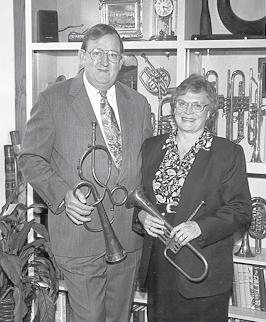

Dr. Jerrie Lucktenberg - former Concertmaster of the Greater Spartanburg Philharmonic (now the Spartanburg Philharmonic), artist, pedagogue, and author - retired from her position during the Philharmonic’s 2002-2003 season. To help ensure the presentation of Spartanburg’s professional orchestra in our community, Dr. Lucktenberg made a generous gift of $50,000 towards the endowment of the Concertmaster Chair. With your help, the Philharmonic has matched this gift, fully endowing the chair as the Jerrie Lucktenberg Concertmaster Chair. We hope you will be inspired to follow Dr. Lucktenberg’s generous lead.
For information about supporting a Legacy Society Fund, contact Kathryn Boucher, Executive Director: kathryn@spartanburgphilharmonic.org | 864.948.9020
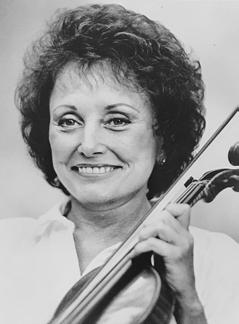 Dr. Joe Roy Utley & Dr. Joella Utley
Dr. Joe Roy Utley & Dr. Joella Utley


John Young Shik Concklin has performed live at the Super Bowl, helped sound engineer a Grammy-winning recording, played a gig with R&B singer Monica, and flown all the way to Kazakhstan to conduct an orchestra for a competition. Despite all that, he cites the John Williams concert he guest-conducted with the Spartanburg Philharmonic in 2018 as the highlight of his career.
“From the minute I walked up there in 2018, there seemed to be something intangible,” he says.
Fast forward five years, and that intangible feeling has turned into something very real. The Spartanburg Philharmonic is thrilled to welcome John as the new Music Director for its 95th season and beyond.
John grew up in Atlanta in a suburban neighborhood without many children his age. His parents decided to send him to a group piano class for socialization opportunities. The early musical exposure led John to continue piano as well as violin. He played throughout high school before deciding to attend Vanderbilt, where he studied viola. Even as a college freshman, he suspected that conducting was his life calling, and he went on to attend Yale for a master’s degree in conducting studies.
In addition to being the Spartanburg Philharmonic’s Music Director, John also serves as Music Director of the Hendersonville Symphony Orchestra, as well as Conductor with the Atlanta Music Project and Piedmont Chamber Orchestra. With so many projects on his hands, he is very thankful for his Google calendar. However, a few years ago he went through a period of questioning his career choice.
“I more or less quit conducting for a few years because it didn’t seem like it was working out,” he says. “I had
done everything you’re supposed to do as a conductor, but there was a long waiting period of cobbling things together, and there reached a point where there wasn’t much on the horizon, so I sort of stopped doing it for a while. It was difficult to wrap my mind around. I had made peace with it, and then about six months later I got asked to do something at Vanderbilt, and shortly thereafter Spartanburg asked me to do the John Williams concert. There were a couple years of silence, and that actually makes me appreciate it so much more now after staring into the abyss.”
The John Williams concert was a massive success. It reminded John of just how much he loved conducting and connecting with an orchestra, and he seemed to share a special connection with the Spartanburg Philharmonic. The orchestra members shared his sentiment and were thrilled to learn that he would be taking the reigns as their new conductor.
“The energy that I sense from John is a true joy for music as well as a wonderful ability to connect easily with other musicians,” says March Moody, a member of the violin section. “His calm, warm, witty and creative approach to our rehearsals and concerts makes for an incredibly rewarding experience.”
When the symphony opened the Music Director position to applicants, John did not hesitate to apply. The interview process was an intense experience for all involved, and John participated in numerous Zoom and phone interviews while the Philharmonic Search Committee narrowed its search from an original pool of 170 applicants.
Finalists, including John, were invited to spend a week in Spartanburg to meet Philharmonic members in person and lead the orchestra in a rehearsal and final concert for evaluation. John recalls the experience as exhausting but exciting, and now he’s looking forward to working with an orchestra that has an “innovative and fresh” outlook.
“When I came back for the interview process, the orchestra had begun all these really cool things like the Bluegrass and Espresso series,” he says. “It continued down that path of like-minded desire to push the envelope.”
John’s own music goals align closely with the Spartanburg Philharmonic’s ideals, one reason this is such a good fit for both parties. John seeks to create a concert series that will appeal to a broad community and tackle some of the intimidating barriers that can deter potential concertgoers.
“Orchestras can be a bit museum-like like,” he explains. “There are all these hidden rules, like you’re not supposed
to clap too loudly. These are barriers to people enjoying themselves. I think the goal is to strip away those barriers. When you come to a Spartanburg Philharmonic event, that event is unique, and you can’t get it anywhere else. So, it’s not only about producing high-quality music, but also accessibility.”
Music selection is key to creating accessibility. The Spartanburg Philharmonic opens its 95th season this fall with Dvořák’s Symphony No. 9, From the New World, a piece long celebrated for its forward-thinking attitude. The Czech composer originally composed the piece, popularly known as the New World Symphony, in 1893 in an attempt to incorporate themes and inspirations he encountered in America.
John plans to expand on the New World Symphony’s themes by pairing it with a newly composed work from Peter B. Kay, Composer in Residence for the Spartanburg Philharmonic, and a jazz-bass concerto by Atlanta-based musician Xavier Foley (see page 35). “Anytime I do New World Symphony, I always insist that we pair it with music from the New World. You can’t really put it with Beethoven. That’s not the point of the piece.”
There is certainly an art to creating a concert repertoire. The conductor must consider both the audience’s attention span as well as the orchestra’s enthusiasm and connection with the pieces.
“Concert planning is kind of like putting a menu together. You have to select the foods and put them in the right sequence,” says John. “People’s ears are like palates. If you’re sitting at a meal and you have too much rich food, it doesn’t taste as good as it should after a while. Or if it’s too light, there’s not enough. So, you have to make sure there’s balance in a program. Fast, slow, major, minor—sometimes you want something pensive paired with something that’s easy to listen to.”
Connecting with the audience offers John another avenue for erasing musical barriers, something he is mindful of when introducing pieces during a concert.
“I learned this when I went out West to wine country,” he says. “Wine was always deeply intimidating to me because I never knew what I was buying or drinking. When you go to a vineyard, you have this person come up to you and tell you about the story and history of the wine, and suddenly you have a personal connection to it. From that approach, I try to introduce pieces.”
John’s goal when engaging with the audience during a piece’s introduction is to provide listeners with a bit
of historical context without bogging them down or detracting their attention from the music itself. Rather, he attempts to answer questions such as “Why does this piece exist, what is it about? What are we listening to?”
John’s sensitivity to the nuances of musical connection and context is integral to his conducting style. He approaches first rehearsals as a chance to learn about an orchestra’s identity and what each musician contributes to form a cohesive whole.

“You always walk into rehearsals with a general idea of a piece, but other people come with their own ideas as well,” he says. “Throughout a rehearsal cycle you help bring those things about, encourage people to take risks, listen and respond to one another.” The ensuing rehearsals witness cohesion and a new birth as the orchestra’s personality begins to develop.
While conducting is John’s main musical passion, he enjoys teaching and has held positions at Clemson, Converse, Vanderbilt, and Furman. His dual background in teaching and conducting has strengthened his skills in both areas.
“At the college level, your job as a conductor is to teach ensemble level playing,” he says. “There’s the formality of the etiquette, but also learning how to listen to one
another, how to play together. In college everyone can play their part, but now it’s a matter of getting the orchestra to work together. With professional orchestras, they know to listen to other people, so what we focus on with the professional group is the nuanced details—what are we trying to express? Is this happy, sad, more complex than that?”
John puts his musical skills to good use in the wider community, not just within the orchestral career world. He helped start the Greenville-based benefit concert series Mozart for a Cause and remains active in the Greenville and Hendersonville communities, as well as in Spartanburg. When he’s not in orchestra mode, John can be found listening to music across all genres, even the Top 40. He enjoys hiking, walking his dog, Herbie, and accompanying his wife, Lauren Maxwell, on piano while she sings.
John’s favorite thing about Spartanburg is the people who make up the community, and he is grateful for the opportunity to deepen his relationship with them. And he is grateful to be part of an extraordinary group of musicians: “People working together, compromising, and listening, putting the whole above the individual, especially during today’s age of divisiveness, is a nice thing to experience every week.”
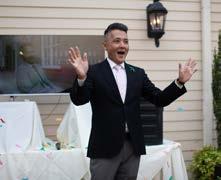
Hundreds of loyal Spartanburg Philharmonic donors and patrons gathered on the Terrace of the Piedmont Club on Thursday, May 25th anticipating the announcement of the organization’s tenth music director. Headed into our 95th Season, this announcement is very special!
A James Bond-themed video was played for the crowd to build excitement and enthusiasm for the pending announcement. The video recapped the search process for the music director and featured each of the nine candidates who came to Spartanburg and conducted our orchestra over the last two years.

With confetti cannons sending pieces of happiness into the air, the name J-O-H-N spelled out in large lighted letters and a colorful balloon arch, the announcement of John

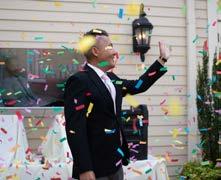


Young Shik Concklin as Spartanburg Philharmonic’s 10th Music Director was made by Board Chair Karen Parrott. And, as they say, the crowd went wild!
Large cut-outs of John Conklin’s face were held high by Philharmonic staff members handing out golden tickets atop golden platters as they made their way through the crowd to ensure everyone got a special golden ticket. These scratch-off golden tickets offered a myriad of prizes ranging from dinner with John to free Espresso tickets to by-one-get-one on Zimmerli Concert tickets.
It was a very special evening, and we look forward to continuing to celebrate John and his tenure with the Spartanburg Philharmonic!
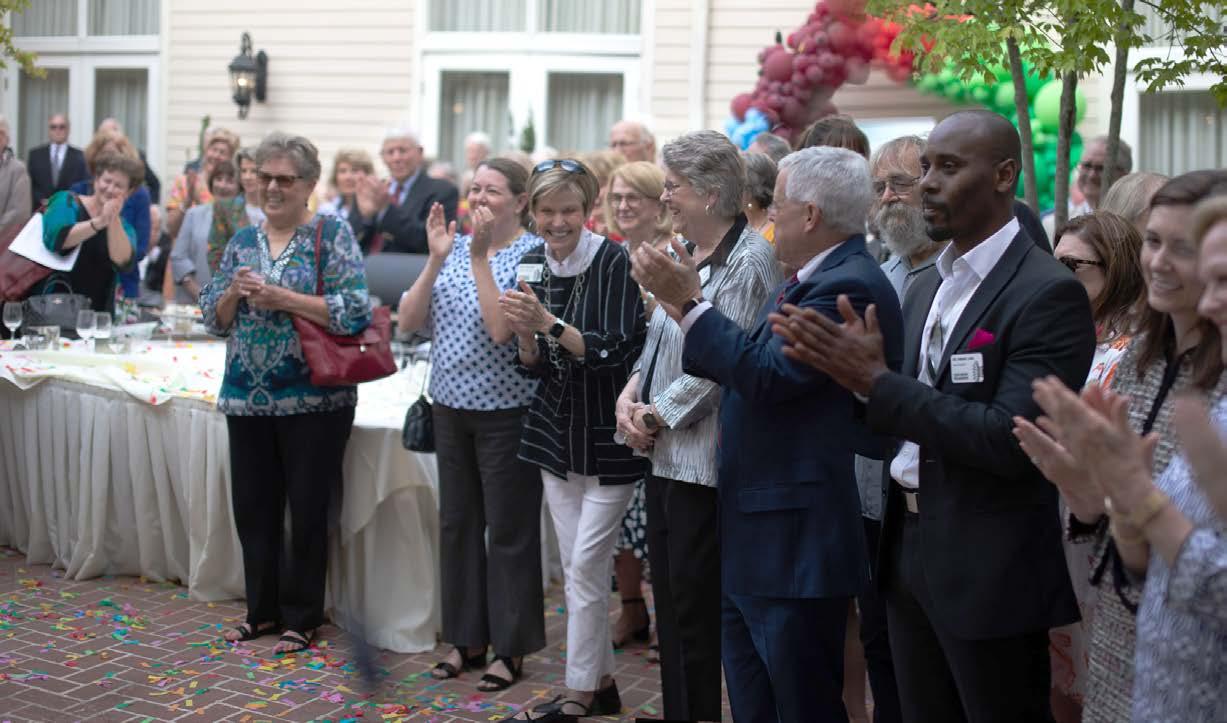


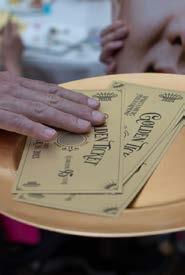

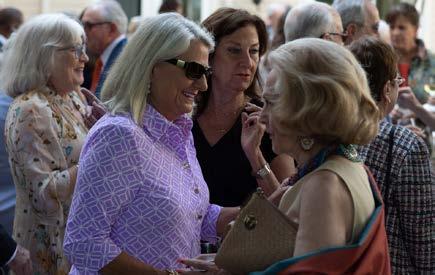

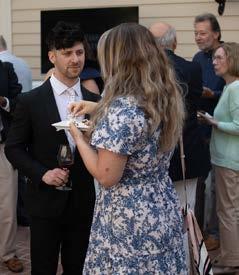


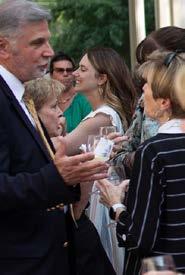



Celebrating over 25 years of Music Sandwiched In, Spartanburg Philharmonic is proud to present an exciting line up of performers for its popular series at the Spartanburg County Public Library Headquarters! MSI is on-going, throughout our season, and all concerts are free and open to the public All are welcome!


BARRET ROOM
WEDNESDAYS 12:15 - 1:00 PM
In Partnership with:
Read more online:
FRIDAY Sept 29, 2023
5:30 PM Pre-Show Mixer
6:30 PM One-hour Concert
Info & Tickets Online:

Featuring: String Quartet & Harp
A strong, robust music brew for the opening of our 95th season, this concert includes Beethoven’s String Quartet no. 11, Op. 95 “Serioso”, SaintSaëns's Fantaisie for solo harp, Op. 95, and many more. Enjoy a mixture of "serious" and lighthearted music from classical to contemporary composers combining the traditions of the string quartet with the beauty of the harp.
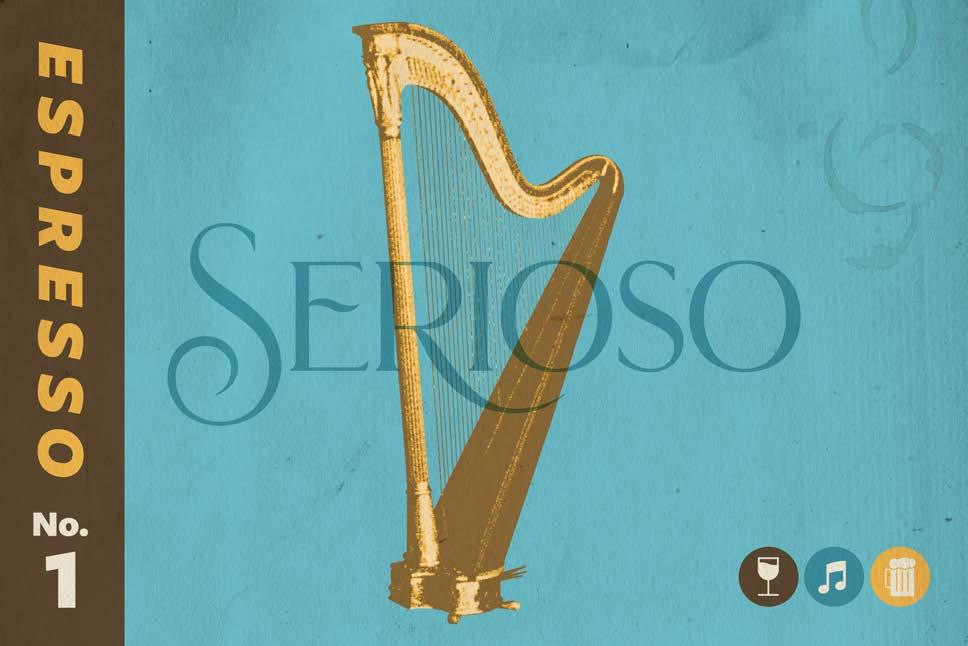
Come early, and enjoy drinks & hors d'oeuvres during our one-hour, pre-show mixer in the lobby. Doors open at 5:30!
 @ the Chapman Cultural Center
@ the Chapman Cultural Center
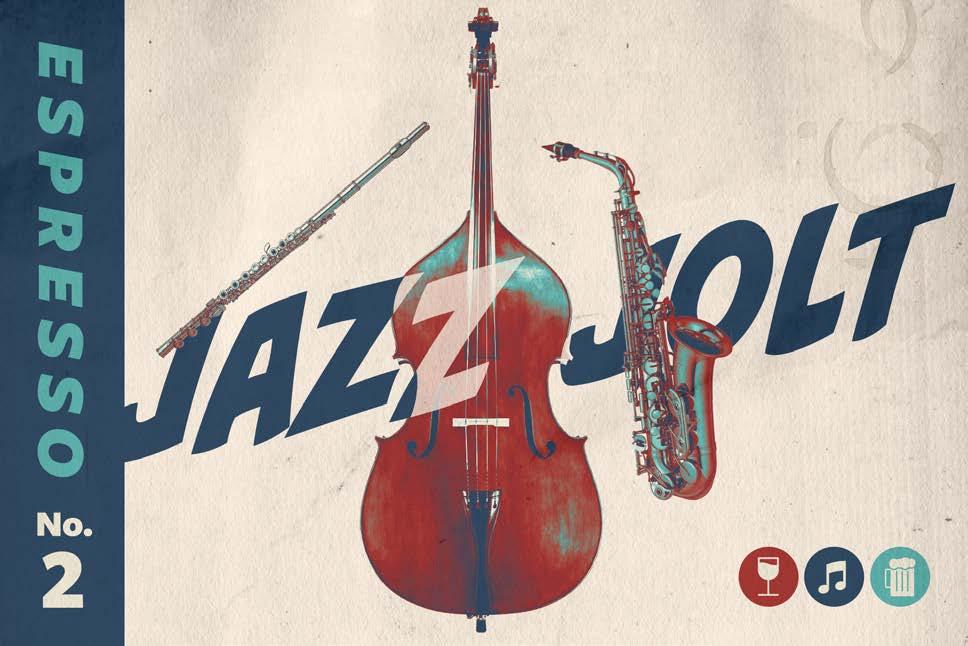
FRIDAY NOV 17, 2023
5:30 PM Pre-Show Mixer
6:30 PM One-hour Concert
Info & Tickets Online:


"PROJECT Trio is packed with musicianship, joy, and surprise!" says Downbeat Magazine. The trio is a dynamic and innovative music group known for their genre-blending performances and captivating stage presence. With virtuosic musicianship and contagious energy, PROJECT Trio has gained worldwide acclaim for their electrifying performances that defy categorization and captivate audiences of all ages. Now the trio lend their energetic style to the Great American Songbook in an exciting jolt of jazz music.
Come early, and enjoy drinks & hors d'oeuvres during our one-hour, pre-show mixer in the lobby. Doors open at 5:30!

Peter Grzan, Committee Chair
Kristin Scott Benson
Joe Cheatham
Walker Copley
Ray Dunleavy
Michael Ferguson
Ben Burke Howell
Chris Kennedy
Chris Strickland
FRIDAY October 6, 2023

8:00 PM
@ Chapman Cultural Center
Info & Tickets Online:
Throughout his 30+ year career, Dan Tyminski has left his mark in every corner of modern music. You know his voice from George Clooney's famous performance of the Stanley Brother’s Classic song, “Man of Constant Sorrow" - now hear him live.

Bluegrass Spartanburg is proudly supported by



Andrew & Kitsy Babb
Eliot & Michel Stone
Jason Bynum
Bluegrass Spartanburg presents both international and local award-winning bluegrass bands in its fourshow series. In 2015, a small group of bluegrass fans living in Spartanburg partnered with the Chapman Cultural Center to bring world-class bands to our hometown. The pilot season was such a success that they sought to expand with the help, experience, and leadership of the Spartanburg Philharmonic.
In the fall of 2017, in partnership with the Philharmonic, the series relaunched as“Bluegrass Spartanburg” and has seen enormous success ever since. Bluegrass Spartanburg hopes to continually offer its fans the opportunity to enjoy outstanding bluegrass music in the Upstate.
FRIDAY Dec 15, 2023


8:00 PM
@ Chapman Cultural Center
Info & Tickets Online:

An exciting new collaboration between two of bluegrass music’s most treasured instrumentalists. And when joined with Shawn Lane, Darin Aldridge, and Tim Surret, you're in for an incredible night of bluegrass you won’t hear anywhere else.


Andrew & Kitsy Babb
Eliot & Michel Stone
Jason Bynum
Working and living in Spartanburg, you don’t exactly get star struck very often. This isn’t L.A., New York, Atlanta, or Nashville where you’re more likely to bump into a celebrity or music legend at your local coffee shop. We’re a town that typically fosters young talent and then lets that talent spread its wings to fly towards a bigger market in search of their dreams. And maybe it’s a bit of a stretch to say that anyone from the world of bluegrass is a “celebrity” by your typical definition save from household names like Steve Martin or Alison Krauss. But what if I told you that one of the most respected and renowned banjo players in the world, yes the world, lives right here in Spartanburg County?
I met Kristin Scott Benson early one morning for a cup of coffee at a local shop in Drayton Mills, nearly on the outskirts of town. Honestly, I had no idea what to expect. Everyone who is anyone in Spartanburg seems to know Kristin. “Oh, you haven’t met Kristin yet? She’s so cool,” was a common response to my inquiries about her. So, leading up to that morning I was a bit…nervous. But when we met and sat down, vanilla latte in hand, everything melted away. It became transparent, from the moment she walked in wearing a t-shirt and flip flops, that Kristin is indeed just a regular person from South Carolina. Just like the rest of us, even more so.
Growing up just half an hour away in the town of Union, Kristin Scott Benson was exposed to music from an early age. Her family instilled in her a deep appreciation for the arts, as her father and grandfather both played bluegrass; the latter doing so professionally. It wasn’t long before she found herself captivated by the sounds of bluegrass melodies. At just five years old, she picked up her first mandolin. When Kristin was nine, she saw a live performance of Doyle Lawson & Quicksilver and was immediately drawn to the banjo, at the time being picked by Scott Vestal. Kristin got her first banjo at thirteen and was well on her way to life as a musician.
As a teenager, Kristin participated in local bluegrass jams and competitions, showcasing her exceptional musical abilities. In 1991, at the age of 17, she joined the acclaimed

Larry Stephenson Band as their banjo player, marking the beginning of her professional career.
With the Larry Stephenson Band, Benson honed her skills on the road, performing at numerous festivals and venues across the country. Her powerful and nuanced banjo playing drew attention and accolades, earning her nominations and awards from the International Bluegrass Music Association (IBMA) for Banjo Player of the Year.
In 2008, Benson reached a new milestone in her career when she became a member of the legendary bluegrass band, The Grascals. Joining forces with the industry’s top musicians allowed her to push her creative boundaries further. The band’s blend of traditional bluegrass with modern influences proved to be a perfect platform for Benson’s virtuosity. With The Grascals, she’s won multiple IBMA awards and earned a Grammy nomination, solidifying her position as one of the genre’s most accomplished banjo players, and in 2018, she won the Steve Martin Prize for Excellence in Banjo and Bluegrass.
Beyond her performances with The Grascals, Kristin Scott Benson has made significant contributions to the


community through teaching and workshops. She is dedicated to passing on her knowledge and expertise to aspiring musicians, providing them with invaluable insights into the art of bluegrass banjo. She has also teamed up with her husband and mandolinist, Wayne Benson, to record a new album titled Pick Your Poison under the duo name of Benson, which was released in 2022.
Kristin remains connected to her roots in Union, SC, and often returns to her hometown, sharing her music and experiences with the local community. She and Wayne now live in Boiling Springs, raising their son, and enjoy time at home when they are not on the road. On top of all else, Kristin currently serves on the Bluegrass Committee for Bluegrass Spartanburg.
Catch Kristin in action when she takes the stage December 15th for a bluegrass concert you won’t want to miss! Wayne & Kristin Scott Benson perform live with a few “Friends”: Tim Surret from Balsam Range on bass, Shawn Lane from Blue Highway on fiddle and vocals, Darren Aldridge on guitar, Wayne Benson on mandolin and Kristin Scott Benson on banjo. Tickets on sale now!
Hosted by The Piedmont Club of Spartanburg
Did you know that each Friday preceding a Zimmerli Concert, the Spartanburg Philharmonic hosts a delicious lunch at the Piedmont Club? You are invited to join us for a delicious meal and learn more about the fantastic pieces you will hear at Saturday evening’s performance.

The icing on the cake (and yes, you do get to visit the fan-favorite Piedmont Club dessert bar), is hearing directly from Music Director John Concklin about the pieces which will be performed on Saturday night at the Zimmerli Series Concert. In addition to having a delicious lunch, this event is a wonderful way to become educated about and familiar with the pieces being performed at the upcoming concert.
“Learning about the composers’ lives and what they were experiencing at the time they wrote the pieces is so interesting. I find when I attend the Zimmerli Concert after attending a Music Lovers’ Luncheon, I gain much more from my experience at Twichell. I find myself listening to hear certain themes and messages from the composers while the pieces are performed,” said Charlene Lyle, a Music Lovers’ Luncheon regular. “I like meeting
the conductor and getting to know him personally. After chatting with him, I feel like I’m watching a friend on stage and feel so proud to see him delivering a wonderful concert!”
Oftentimes, in addition to our Music Director John Concklin attending Music Lovers’ Luncheon, the featured soloists will also attend and offer an excerpt of their performance. The intimate size of this audience offers attendees an opportunity to ask questions of the conductor and of the soloists. It’s a truly special offering, and one we urge you to attend.
Fall Dates:
• Friday, September 15
• Friday, December 8
Piedmont Club members should RSVP to the Club.
Non-Piedmont Club members should RSVP to:
chandler@spartanburgphilharmonic.org (864) 278-9671
Musician Sponsorship is one of the many benefits of being a Philharmonic supporter.

At the giving level of $1,000 and above, you have the option to sponsor a musician and be listed beside their name in the program.
Musician sponsorship is important since it not only fosters a relationship between the donor and musician but it helps the Spartanburg Philharmonic raise critical funds to keep our program thriving. We would like to extend a huge thank you to everyone who currently sponsors a musician! (see pages 32 & 33)
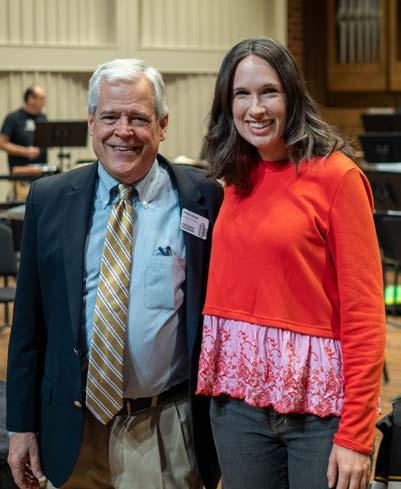

Stay tuned for exciting musician and sponsor opportunities coming up this season. And if you’d like more information on sponsoring a musician, please reach out to Katherine Poss in the Philharmonic office.
katherine@spartanburgphilharmonic.org

Orchestra Members & Chair Sponsors as of August 2023
Joanna Mulfinger, Concertmaster
Endowed by the Dr. Jerrie Lucktenberg
Concertmaster Endowment
Courtney LeBauer, Associate Concertmaster

Mr. & Mrs. George Dean Johnson
Jonathan Urizar, Assistant Concertmaster
Mary Irwin
Dr. Barry Bodie & Ms. Laurel D. Johnson
Robin Hague Els
Ms. JoAnn Bristow
Carla Bilger
Randolyn Emerson
Mr. and Mrs. John Cribb
Amanda Gentile
Mr. & Mrs. Geoffrey Wilson
Abigail Inafuku
Mr. and Mrs. Chris Strickland
Emily Kirkpatrick
Nyamka Odsuren
Mr. and Mrs. Peter Weisman
Christine Hallett-Penney
Mr. & Mrs. Ray Dunleavy
Andrea Pettigrew
Kathleen Robinson
Mr. & Mrs. David Ellis
Ashley Horvat, Principal
Mr. & Mrs. Roger Habisreutinger
Simone Beach, Assistant Principal
Ms. Laura Henthorn
Ann Buttimer
Laura Allen & Roger Sullivan
Michele Tate Cockram
Mr. E.T. McLean, in memory of Henry Janiec
Theresa Jenkins-Russ*
Mr. & Mrs. Wiley North
Allison Key
Mrs. Tamela Spann
Jessica Martin
In Memory of CRI, M.D.
March Moody
Col. & Mrs. Robert N. Maddox
Helen Tipton
Dr. Melinda Moretz
Emily Riesser
Mr. & Mrs. Walter Sunderlin
Ian Bracchitta*, Principal
Mr. & Mrs. Jerry Cogan
Matthew Waid, Assistant Principal
Mr. & Mrs. Paul Lehner
Brian Gencarelli
Dr. and Mrs. Gene Lassiter
Tim Easter
Concertmaster
Joanna Mulfinger is a native of Greenville, SC. She graduated from Bob Jones University and continued her education at the Peabody Conservatory in Baltimore, MD, receiving a Masters Degree under the tutelage of renowned Russian pedagogue Victor Danchenko. While at Peabody, she was awarded the J.C. van Hulsteyn Prize for Outstanding Musical and Academic Contributions. She has pursued additional summer music studies at the Juilliard School in New York, the Hanns Eisler Hochschule Fur Musik in Berlin, Germany,
Alvoy Bryan Jr.*, Principal
Endowed by friends and family in honor of Wallace Eppes Johnson
Arthur Ross, Assistant Principal
Mr. James Cheek
Amber Autry
Diana Maley Berti*
Mr. Peter Grzan
Hannah Dara
Scott Garrett
Emma Smoker
Mr. & Mrs. Don Miles
Michael Weaver
Ismail Akbar, Principal
Mr. & Mrs. Stanley Baker
Kathy Foster, Assistant Principal Lib & Rick Orr
Jean Anderson
Jordan Bartow
Meredith Keen
MG(R) Edwin E. Spain, III & Mary B. Spain
Eric Scheider
Dr. and Mrs. Peter Sereque
Benjamin Smith
Drs. Chandra and Boone Hopkins
and other festivals in France, Italy, Germany, Switzerland, and Canada. Since returning to Greenville she has developed a large studio of private students, and has been on the faculty of several local universities.
Joanna appreciates learning about all kinds of music. In 2016 she learned and performed a new work for erhu, a stringed instrument of Chinese origin. And, in 2017, as a result of her interest in Baroque violin playing, she started a Baroque String
Rhea Jacobus, Principal
Mr. & Mrs. John S. McBride, Jr.
Caroline Ulrich
Mrs. Susan H. Baker
Jessica Sherer
Larry Butka & Greg Murphy
Ginny Metzger, Principal
Mrs. Mac Cates, Jr.
Kelly Vaneman*, Associate Principal
Rachel & Ken Deems
Mary AllyeB Purtle
David and Jennifer Smart
Clarinet
Karen Hill, Principal
Dr. & Mrs. Louis Knoepp, Jr.
Harry Hill‚ Jr.
Mrs. Jack Steinberg
Kyra Zhang
Mr. and Mrs. Frederick B. Dent, Jr.
Frank Watson, Principal
Dr. & Mrs. Caleb Loring, IV
Rosalind Buda
Ms. Judy McCravy
Stephanie Lipka Rhyne
Mr. Mark Carlson
Horn
Andrew Merideth*, Principal
Mr. & Mrs. Donald Wildman
Chris George
Ms. Karen E. Bjelland
Darian Washington
Dr. Mark Ferguson
Ericka Grodrian
Jeanette Schlimgen
Dr. and Mrs. Ernest Camp III
Trumpet
Tyler Jones, Substitute Principal
Karen & Stephen Parrott
Kenneth Frick
Dr. Ohmar Land
Bruce Cox
Mr. & Mrs. Thomas P. Nederostek
Trombone
Mark Britt, Principal
Mr. & Mrs. V. C. McLeod, III
John Grodrian, Substitute Principal
Rienette Davis
Mr. & Mrs. H. Peter Theiler
Eric Henson
Clint & Samantha Larkins
Tuba
John Holloway, Principal
Mr. & Mrs. William Barnet III
Ensemble at Anderson University, which she led for four years. Professionally, she has performed with Baroque ensembles, including The Sebastians in New York and New Jersey, and is currently a member of Early Music New York.
Joanna is active at the Peace Center in Greenville, where she enjoys playing with National Tours of Broadway shows such as Disney’s Lion King, Chicago, Phantom of the Opera, My Fair Lady, White Christmas, Something Rotten, Motown, Newsies, Porgy and Bess, The Producers, Young Frankenstein, Evita, West Side Story, and Wizard of Oz, among others. She is also in demand to accompany local performances of popular touring artists such as Smokey Robinson, Celtic Woman, Trans-Siberian Orchestra, Josh Groban, Mannheim Steamroller, Anne Murray, Wayne Newton, and Johnny Mathis.
Patrick Lowery, Principal
John McAllister & Kate Castleman
Adena McDaniel, Co-principal
Ms. Joan Gibson
Matt McDaniel, Co-principal
Dr. Leslie W. Howard, Jr.
Del Burton
Mrs. Celia Cogdell
Piano
Brennan Szafron, Principal
Mr. & Mrs. Lindsay Little
Harp
Emily Waggoner, Principal
Mrs. Nelly Zimmerli
As a chamber musician, Joanna is a member of several local ensembles including the Mulfinger String Quartet, Trio Tapestry (guitar, cello, violin), Tryptich Musica (piano, horn, violin), and Steve Eager and Friends, a band that covers pop and Broadway tunes.
She is an active orchestral musician. From 2007-2019 she was Assistant Concertmaster and then Concertmaster of the Spartanburg Philharmonic and returned in 2022, first as Interim Concertmaster and then on a permanent basis after the new Music Director was announced in 2023. She has been Principal Second Violin of the Greenville Symphony Orchestra since 2003.
Stomach Bug/GI Issues Swimmer’s Ear Seasonal Allergies
Head Lice Tick Bites Asthma Refills UTIs Birth Control
Nail Condition Rashes & Sores Pink Eye Minor Burns
Back Pain Whooping Cough Ringworm Tick Bites Cold er Blister Athlete’s
Can’t wait to feel better?
Connect to care now.
piPen Refills Shingles Malar
ia Prevention Flu Shot Yeast Infection Stomach Bug/GI
sues Swimmer’s Ear Seasonal Allergies Head Lice Tick
Asthma Refills UTIs Birth Control
Nail Condition Rashes
Sores Pink Eye Minor Burns
Back Pain Whooping Cough
Ringworm Tick Bites Cold Fever Blister Diaper Rash
Sickness Athlete’s Foot EpiPen Refills Canker Sores
Virtual Care as little as $19
Reflux Shingles Malaria Prevention Flu Shot Yeast Infection
Stomach Bug/GI Issues Swimmer’s Ear Seasonal Allergies
Head Lice Tick Bites Asthma Refills UTIs Birth Control
Everyday health issues can ruin your day. Why wait for care? Connect online, chat, video or phone.
Nail Condition Rashes & Sores Pink Eye Minor Burns
Back Pain Wooping Cough Ring Worm Tick Bites Cold Fever Blister Diaper Rash Motion Sickness Athlete’s
Go to SpartanburgRegional.com/VirtualCare to start your visit now.
EpiPen Refills Canker Sores Acid Reflux Shingles Malaria
September 16, 2023
7:00 PM
Peter B. Kay
Fanfare 8 min
Xavier Foley
Soul Bass, for double bass and orchestra 20 min
Xavier Foley, bass
Sponsored by Mr. and Mrs. Roger Habisreutinger
I. Prelude
II. Chorus
III. Fugue
INTERMISSION
Antonín Dvořák
Symphony No. 9 in E minor, op. 95, "From the New World" 40 min
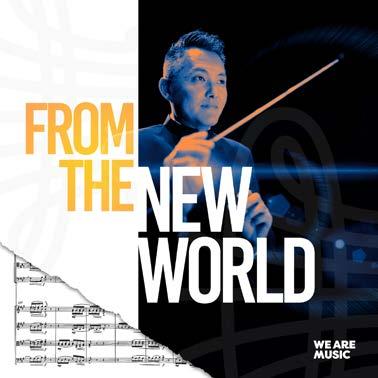
I. Adagio - Allegro molto
II. Largo
III. Molto vivace
IV. Allegro con fuoco
Program Online:

www.yca.org
Programs subject to change. All timings are approximate.
Antonin Dvořák’s Symphony no. 9 “New World” is an apt beginning to our 95th season and my tenure with the Spartanburg Philharmonic. Though this work was chosen before I became your 10th Music Director, it had long been on my mind as a potential opener. A comforting coincidence, perhaps. Intriguingly, the work is also Dvořák’s Opus 95, which adds a layer of numerological serendipity that could almost be perceived as divine alignment. To me, it is another sign that I am exactly where I am meant to be.
Even more compelling than that, though, is the original intent of this piece.
In 1892, Dvořák was invited to the United States by Jeanette Thurber to lead a new National Conservatory she had founded in New York City. The school was an anomaly for its day, because it enrolled women, people of color, and persons with disabilities. It was through this work that Dvořák met Harry T. Burleigh, an African American student at the conservatory and the grandson of enslaved people.
At the time, it was en vogue for composers to move away from Germanic-centered musical traditions and lean into nationalistic expression. Dvořák had embraced this trend in Europe and made his name by exploring his Czech roots. Within this movement, the American sound had not yet been defined. So, Ms. Thurber asked Dvořák to help identify a truly American expression at the National Conservatory.
Dvořák’s Ninth symphony was intended to be a model of what the American sound could be. The composer
famously said that America had everything it could want and did not need to import a thing from Europe. With that in mind, it is clear that the “New World” symphony is built on the Negro Spirituals Burleigh shared with Dvořák. He was also inspired by other indigenous musical sounds discovered in the United States. This is why the work sounds so familiar, comforting, and inspiring to American audiences. Dvořák identified a sound that is uniquely ours.
Yet because we have heard this piece so many times, we forget that we must hear these melodies and ideas through the ears of Dvořák. To him, they were new. He was discovering them, encountering a soundscape that was completely non-existent in Europe. Those sounds led Dvořák to a piece that is full of hope, enchantment, and possibility.
We start our 95th season in that spirit.
Dvořák’s New World Symphony begs to be paired with additional sounds from the New World. I cannot fathom programming it any other way. To that end, our featured soloist for this concert is Xavier Foley, a fellow Atlanta native. He will offer the heart-stirring Soul Bass Concerto, which he also composed.
To my ear, this piece has elements of Paganini-like virtuosity, jazz, bossa nova, tango, soul, and a hint of Copland. It is a sound that is only possible because Xavier exists and was uniquely influenced by his experiences. That means the Soul Bass Concerto is tied to Dvořák’s Ninth symphony and the American sound. I have no doubt you will love it as much as I do.

Our concert begins with a brand-new piece from our very own composer-in-residence, Peter B. Kay. It was written in celebration of our 95th season, and the orchestra will have only heard it for the first time about four days before the premiere. Tonight, we are all discovering a new sound just like Dvořák did 125 years ago.
Peter knows the Spartanburg Philharmonic better than anyone. His music was the first thing we heard when we returned from the pandemic; it is played every year as Ballet Spartanburg concludes the Nutcracker; and it has been there for us at nearly every milestone for the past decade. There is no doubt this sound is our own. I hope you love it, too.
Enjoy the concert—may this be the first of many discoveries we make together.
- John ConcklinWhen beginning a new piece, I often turn to my older sketches and pieces that I wrote early in my career. These provide a great jumping off point for me to arrange ideas I have carried with me for decades into something more complete; a musical experience that was always intended, but needed more time to grow into itself.
In 2016, I was asked to compose a short fanfare to be played in the lobby before each concert at Twichell. The purpose was to alert
patrons that the show was about to start and to find their seats. Short and to the point, this 11-measure bugle call for two trumpets was also derived from an earlier, unused sketch. After a season or so, the Philharmonic discontinued this practice (I’m not sure it was all that effective anyway), and the sheet music was shelved. Now in 2023, it returns to the hall at Twichell, serving as the foundation for this new Fanfare for full orchestra.
The Fanfare opens with a bold statement from the brass section featuring discordant tension and harmonic resolve: growth and strength. Following this brief introduction, the music shifts to a lighthearted, cheerful, and exuberant pace. As the name suggests, the piece is designed to showcase the power of the symphony, celebrating this wonderful new chapter in our orchestra’s lifetime. My hope is that listeners will be carried on a journey, finding joy and excitement along the way. So, find your seats! The next chapter in Spartanburg Philharmonic’s continuing legacy is about to begin...
COMPOSED
2023
INSTRUMENTATION
piccolo, flute, 2 oboes, 2 clarinets, 2 bassoons, 4 horns, 2 trumpets, 3 trombones, tuba, timpani & percussion, and strings
APPROXIMATE DURATION
8 minutes
We tend to talk about careers as having “arcs” or “trajectories,” but neither of those words quite does justice to Xavier Dubois Foley’s young career. “Rocket-like ascent” would probably be more accurate, and Foley’s rocket-like ascent is still very much in process, so there’s no telling just how high into the firmament he’ll end up.

Foley grew up in the Atlanta area, and is an alumnus of the Atlanta Symphony’s excellent Talent Development program, which offers high-level training to students from a diverse variety of backgrounds. He went from there to the Curtis Institute (which is like Juilliard but smaller and more exclusive, if you were wondering whether such a thing is possible), then won the Sphinx Competition while still a student. A win of the Young Concert Artist competition was followed by the Avery Fisher Career Grant, which is doubtless the most prestigious feather a young American musician could add to his cap.
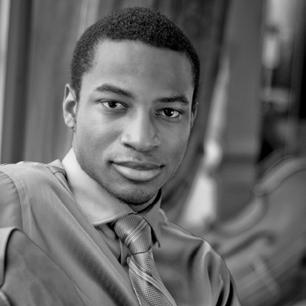
Many game-changing virtuosos on their instruments (think Chopin, Liszt, Paganini, Jimi Hendrix, etc.) began the second career for which they’re even better known -- composing -- by writing music for themselves to play. Foley studied with the Grammy-winning bassist Edgar Meyer, and Meyer is as well-known among jazz
COMPOSED
2022
INSTRUMENTATION
2 flutes, 2 oboes, 2 clarinets, 2 bassoons, 2 horns, 2 trumpets, bass trombone, timpani, percussion, harp, and strings
APPROXIMATE DURATION
17 minutes
and bluegrass fans as he is among classical ones; similarly, Spartanburg audiences thrilled to Bela Fleck’s Banjo Concerto just a few years ago.
So, it isn’t surprising that Foley began to compose, and it isn’t surprising that Soul Bass, the concerto he premiered with the Atlanta Symphony last year, should bear influences from a popular genre of music that the composer has known since childhood. But whereas Meyer’s and Fleck’s music both display influences from the jazz and bluegrass they play together, Foley’s tips its cap to the music of its composer’s youth – and in particular “Soul Train,” the iconic televised dance party that ran for 30 years at the end of the 20th Century and the beginning of this one.
Concertgoers of a certain age will remember “Soul Train” host Don Cornelius’ majestic Afro, and much of Soul Bass swaggers with Cornelius’ preternatural sense of cool. And
while soul music as a genre is characterized by a rock-solid, strutting bass (think Wilson Pickett’s “In the Midnight Hour,” or pretty much every Motown song ever), just as important to the music’s impact is a great singer: once Aretha Franklin starts singing, for instance, does anyone even notice the bass line? Likewise, Soul Bass's opening movement lays down a groove, and then the soloist quickly climbs up to his instrument’s highest notes, and swoops and dives in that register in a way that could only be called Aretha-esque. Soul Bass's second movement evokes a solo song in much the same way that the second movement of Dvorak’s “New World” Symphony does, and its closing Fugue places its driving and groovy theme squarely into the middle of European tradition. Soul Bass showcases its composer’s unique and distinctive cultural voice just as much as it does his extraordinary instrumental virtuosity.
So, here’s a discussion question for you: what, exactly, is “American music?”
Is it music that was first performed in America? Music written by an American? Music written or performed in a specifically “American” tradition? And, given that all those “American” traditions – from Appalachian folk ballads to jazz to rock to hip-hop – are all actually mashups of traditions imported from places like Europe and Africa, how do you put your finger on when a tradition stops being European and starts being American?
I ask because the Ninth and last symphony by the great Czech master, Antonin Dvořák, could by certain definitions claim to be the first great American piece of classical music.

From 1892 to 1895, Dvořák lived in New York City and spent his summers at a Czech immigrant community in rural Iowa. During that time, he was the first Director of the now-defunct National Conservatory of Music,
and during that time, he wrote an article for Harper’s magazine which would come to loom large in American musical history. In it, Dvořák declared that, while Americans had “worked wonders in most fields of endeavor,” in music they were sadly backward, content to produce poor imitations of European music. The way to greatness, Dvořák asserted, lay in the development of a national style of composition based as much on America’s muscular folk
and popular traditions as on the European classics. By way of illustrating his point, Dvořák composed the most popular and perhaps greatest of his symphonies.
And despite his thoroughly European heritage, Dvořák was in a perfect position to make the point. He is generally (and rightly) thought of nowadays as an exemplar of nationalism in music, evoking and celebrating the culture and community of a people outside the AustroGerman tradition of Mozart and Beethoven. In the waning years of the 19th Century the Czech people, long subject to the rule of the Austrian empire, were working to throw off the yoke of Vienna; Dvořák’s music suppled them with turns of melody, harmony, and form that were recognizably Czech.
But Dvořák can also be taken to represent another ideal, one perhaps more prevalent in America than in Europe: the rags-to-riches, pull-yourself-up-by-your-own-bootstraps ethic seen of the Horatio Alger stories. The son of a small-town butcher, Dvořák originally planned on following his father’s trade, but a benevolent uncle recognized the boy’s musical gifts and sent him to Prague to study. Upon leaving school Dvořák supported himself as a violist for more than a decade, composing in his spare time as a sort of hobby. He was in his thirties before Brahms, a jury member for two composition contests Dvořák entered, recognized his genius and presented a portfolio of Dvořák’s works to his publisher. Within a few years, such works as the 1878 Slavonic Rhapsodies had made him famous across Europe. When he arrived in America in 1892, less than two decades after supporting himself as a violist in a theater orchestra, Dvořák had been awarded an honorary doctorate from Cambridge University and was among the bestknown musicians in America the second he set foot here.
Like Beethoven and Schubert – who, like Music Director John Young Shik Concklin, both played viola as well – Dvořák completed nine symphonies. The Ninth, which the composer subtitled “From the New World,” is the bestloved, in part at least because it is filled with
melodic gestures inspired by American folk melodies. The National Conservatory which Dvořák directed offered admission to both women and African-Americans (shockingly progressive for the time!), and there Dvořák became friendly with the Black vocalist Harry Burleigh. The two spent many an hour together, Burleigh sharing spirituals, plantation songs, and Stephen Foster tunes with the enthralled composer. Burleigh’s songs bore greatest influence on the Symphony’s Largo, especially its touching primary tune. Stated first by the English horn, whose reedy tone color evokes Burleigh’s voice, the melody is so similar to a spiritual that it later became one – the words “Goin’ Home” were set to it a few years later.
The Ninth was premiered by the New York Philharmonic under the direction of Anton Seidl, and was, to put it mildly, a success. After the Largo the packed house was unable to restrain itself and burst into applause. Seidl, reported the New York Herald, gestured to a man in one of the boxes:
… With hands trembling with emotion Dr. Dvořák waves an acknowledgment of his indebtedness to Mr. Seidl, to the orchestra, and to the audience, and then disappears into the background while the remainder of the work goes on… At its close the composer was loudly called for. Again and again, he bowed his acknowledgments, and again and again the applause burst forth.
Even after he left his box and was walking about in the corridor the applause continued. And finally, he returned to the gallery railing, and then what a reception he received! The musicians, led by Mr. Seidl, applauded until the place rang again.
Chris Vaneman Contributing AuthorGUEST
ARTIST, DOUBLE BASSXavier Foley is known for communicating his virtuosity and passion for music on the double bass, which is rarely presented as a solo instrument.
Xavier is a first prize winner of the 2016 Young Concert Artists International Auditions, winner of the 2014 Sphinx Competition and a 2018 Recipient of the Avery Fisher Career Grant. He has performed recitals at Shriver Hall, Rockport Music, La Jolla Chamber Music Society, National Gallery of Art, and the Harriman-Jewell Series. An avid chamber musician, he has appeared with the Chamber Music Society of Lincoln Center, Marlboro Music Festival, Bridgehampton Chamber Music Festival, and Skaneateles Festival.

As a composer, Xavier’s “For Justice and Peace” was premiered by the Sphinx Organization at Carnegie Hall in

October 2019 and co-commissioned by both organizations. It has since been performed by such orchestras as the Atlanta Symphony, New West Symphony, Oregon Symphony, and Saint Paul Chamber Orchestra.
Upcoming commissions for Xavier Foley include Santa Fe Pro Musica, the Sphinx Organization co-commissioned with Carnegie Hall and the New World Symphony, and the Oregon Symphony, where he has been named Artist-inResidence for the next three seasons.
A native of Marietta, GA, Xavier is an alumnus of the Perlman Music Program, and earned his Bachelor of Music from the Curtis Institute of Music working with Edgar Meyer and Hal Robinson. His double bass was crafted by Rumano Solano.

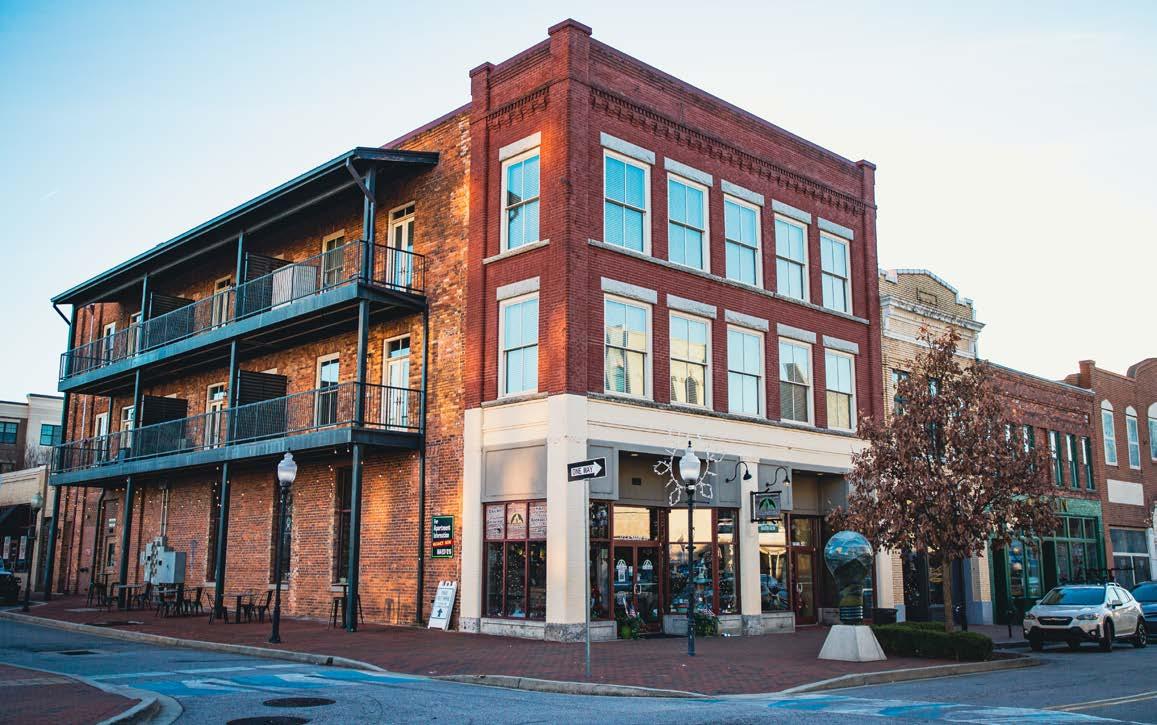


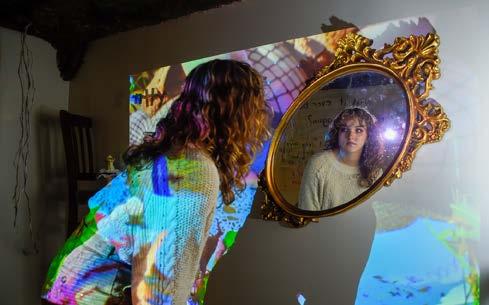

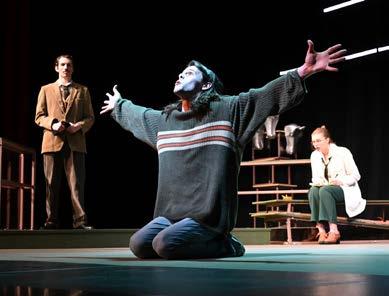

December 8-10, 2023
3:00 PM & 7:00 PM
In Partnership with:
Piotr Ilyich Tchaikovsky, arr. Golan
Nutcracker, op. 71 86 min
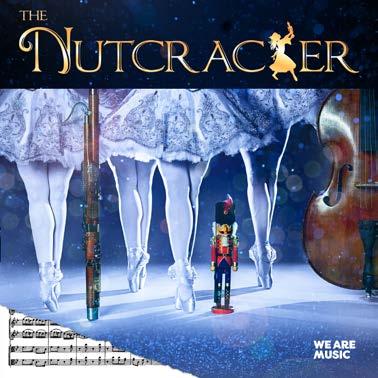
Overture
ACT 1
Tableau I:
I. Lighting and Decorating the Christmas Tree
II. March of the Toy Soldiers
III. Little Gallop of the Children & Entrance of the Parents
IV. Dance Scene (Arrival of Drosselmeyer)
V. Grandfather’s Dance
VI. Clara and the Nutcracker
VII. The Battle
Tableau II:
VIII. A Pine Forest in Winter
IX. Waltz of the Snowflakes
Program Online:
ACT 2
Tableau III:
X. The Magic Castle in the Land of Sweets
XI. Clara and the Nutcracker Prince
XII. Divertissment
a. Chocolate
b. Coffee
c. Trepak
d. Dance of the Reed-Pipes
e. Tea
f. Neapolitan Dance
g. Mother Ginger and the Polichinelles
XIII. Dance of the Flowers
XIV. Pas de deux
a. Sugar Plum Fairy and Her Cavalier
b. Variation I: Tarantella
c. Variation II: Dance of the Sugar Plum Fairy
d. Coda
XV. Final Waltz and Apotheosis
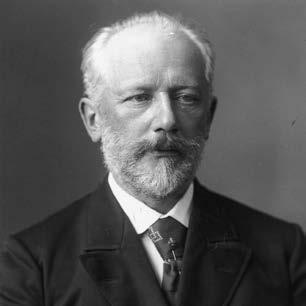
COMPOSED
1892
INSTRUMENTATION
(Golan Reduction)
2 flutes/piccolo, 2 oboes/ engligh horn, 2 clarinets/bass clarinet, 2 bassoons, 3 horns, 2 trumpets, 3 trombones, tuba, timpani & percussion, harp, keyboard, and strings
APPROXIMATE DURATION
86 minutes
It has been 130 years since the first premiere of The Nutcracker, and Tchaikovsky’s iconic music has remained a staple for every holiday season across the globe. However, surprisingly, when the ballet was originally conceived, the reviews were lackluster. Based on E.T.A. Hoffmann’s 1816 fairy tale, The Nutcracker and the Mouse King, the story was adapted for the ballet by Marius Petipa and Ivan Vsecolozhsky in St. Petersburg. Tchaikovsky and Petipa had seen great success from their previous ballet, The Sleeping Beauty, and hoped their luck would continue. Unfortunately, however, Petipa fell ill and much of the choreography had to be completed by his assistant. Although the audience loved Tchaikovsky’s music, some of which he had premiered earlier in the year (The Nutcracker Suite), critics were annoyed by the prominence of children in the ballet and the lack of plot in the second half. It wasn’t until George Balanchine choreographed The Nutcracker for the New York City Ballet in 1954 that it really gained popularity. Since then, choreographers across the world have interpreted Tchaikovsky’s music to create a spectacular collaboration between the visual and the audial. This production features the beautiful choreography of Artistic Director Carlos Aguedelo, who says:
After thirty years of working on our Nutcracker productions, I continue to be inspired to improve my choreography every time I listen to Tchaikovsky’s amazing score. I discover musical nuances I never noticed before and I naturally want to echo those subtleties in the movement that carry the story forward. I am a traditionalist, and passionate about maintaining the purity of the story line. However, I also enjoy the process of fleshing out the mystery, the darker and scariest parts of the narrative that evolve into a passionate and romantic resolution in Act I. I do not strive to reimagine the ballet in order to be different. I am more interested in making the dancing more brilliant and as nuanced as the musical score. I follow the lead of the music, moving performers and the audience from reality, the Christmas Eve party, to the fantasy, giant
mice and toy soldiers coming to life, after which the story finally transitions into the sweeping and enchanting Land of Snow. In the end we all surrender to the magic spell of The Nutcracker!
Together, with a long history of choreographic innovation and Tchaikovsky’s enduring music, The Nutcracker really is a quintessentially Christmassy success.
While you’re watching, here are just a few wonderful moments to listen for. The magical combination of Tchaikovsky’s music and the visuals on stage contributes to The Nutcracker’s holiday wonder.
Listen for the high and light instruments playing their fast and bouncy rhythm. You can imagine these as the scurrying feet of excited children–the pitter-patter of eager holiday anticipation. The harp arpeggios and tremolo in the strings mimics the tree’s illumination with Christmas magic.
The horns play a fanfare, signaling that it is time to dance! Listen for the children’s
instruments you might remember receiving as a Christmas present like toy trumpets, toy drums, cuckoos, and cymbals!
Arrival of Drosselmeyer:
“Who is this mysterious man?” the tubas, trombones, horns, and violas ask. The key shifts from B-flat to E to echo the ambiguity of Herr Drosselmeyer. (This key change foreshadows a larger, thematic key change, from B-flat in Act I to E major in Act II. The entrance of Drosselmeyer, and thus, his magical presents, are the first glimpse into this magical world!) Drosselmeyer’s ominous entrance is short-lived, however, and the mood lightens as he unboxes his toys; his melody turns into a waltz!
Clara and the Nutcracker:
The guests leave and the children are sent to bed, but Clara wishes to see her broken nutcracker once more. Listen for the emerging horns, forewarning something sinister will occur. The sound of the triangle is a chiming clock: it is midnight. Soon after, the bass clarinet, bassoon, and piccolo “squeak” to indicate the soon-arriving mice. The strings play an ascending motif, going up and up, and the orchestration becomes louder and fuller, like the rising, growing Christmas tree.
The Battle:
A battle occuring onstage is mirrored in the orchestra. The toy soldiers are characterized by high-pitched brass fanfares and drum rolls, whilst the woodwinds, especially the piccolo “squeak” to highlight the ominous mice.
Waltz of the Snowflakes:
As Clara and the Prince enter the wintry forest, the music suggests the swirling blizzard – perhaps the end of a storm and the beginning of a beautiful winter wonderland. Harp arpeggios cascade like the falling snow, and then the waltz begins. The rhythm is
slightly modified, by spreading each “oompah-pah” across two bars of music instead of one. A few minutes in, a new color is introduced, made to sound like a children’s chorus. The ending horns declare not only triumph, but the ultimate feeling of holiday hope!
The Magic Castle:
As we enter the second act, a barcarole is played. This traditional folk song, originally sung by Venetian gondoliers, often indicates a transition between worlds in ballet. In this case, Clara is transported to the fantastical Kingdom of Sweets. The flutes’ use frullato, a flutter-tonguing technique, swirling sweetly up and down with the harp, like a cascading chocolate waterfall.
Clara and the Nutcracker Prince:
The Prince recounts his battle with the Mouse King, and musical themes from Act I reemerge. The bass strings play a low battle rhythm while the piccolo squeaks its mousy music.
Chocolate:
Sweet treats from all around the world now arrive! This dance features a trumpeting solo and castanets, trying to replicate the sounds of flamenco music.
Coffee:
Aiming to sound “oriental,” the Arabian Dance is actually based on a Georgian lullaby. The clarinets and strings play smooth, low and simple harmonies, and the higher violins play their modal, snake-like melody.

BAM! Here come the Russians! The entire orchestra is now in use, growing in intensity, and the turbulent tambourine accelerates until culminating in a raucous final chord!
The Dance of the Reed Flutes is graceful, light, and playful! The flutes replicate the sound of a mirliton, which is both a reedy musical instrument and a sweet French cake.
Tea:
The flutes and piccolos twirl melodically in the Chinese Dance, while the bassoon bounces in the base and the strings use pizzicato for a complementary color. Later, the clarinets begin their arpeggiated accompaniment while some jingling bells chime, like the twinkling of Christmas tree lights.
This fan favorite is based on a French folk song. Listen for the festive and fun tambourine.
Nearing the end, the graceful melody of the waltz begins with a mystical and enchanting harp cadenza. The french horns and clarinet enter, leading the “oom-pah-pah” rhythm of the waltz. Finally, the strings play their iconic, luscious and sweeping melody! Watch the flowers “grow” on stage as the orchestra becomes fuller in the pit.
Now enters the Sugar-Plum Fairy, accompanied by the iconic celesta, which Tchaikovsky specifically ordered for this ballet. He described it as “something between a small piano and a Glockenspiel.” Listen to its delicate, colorful, and lyrical ringing which perfectly mirrors the sweetness of the dancer herself. Both the music and dance bring twinkly fairy-dust to life.
This is the celebratory ending to the most magical night! Listen for that same bararolle as we are escorted from the Kingdom of Sweets back into reality. Luckily, however, the magic of the Kingdom of Sweets endures; it is rediscovered through the joy of a beautiful Christmas morning.
Julia Smart Philharmonic Intern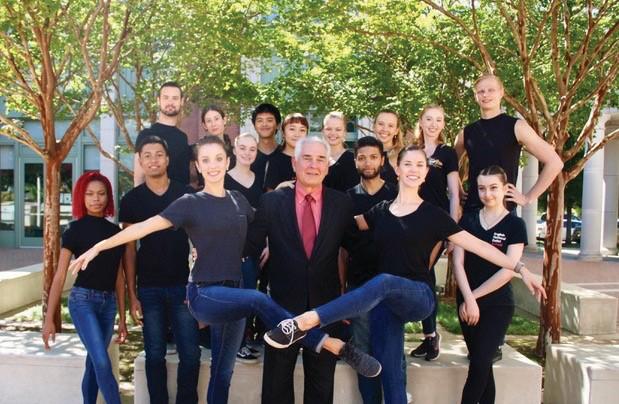





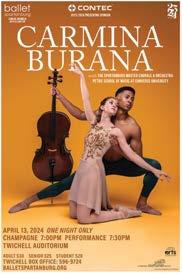
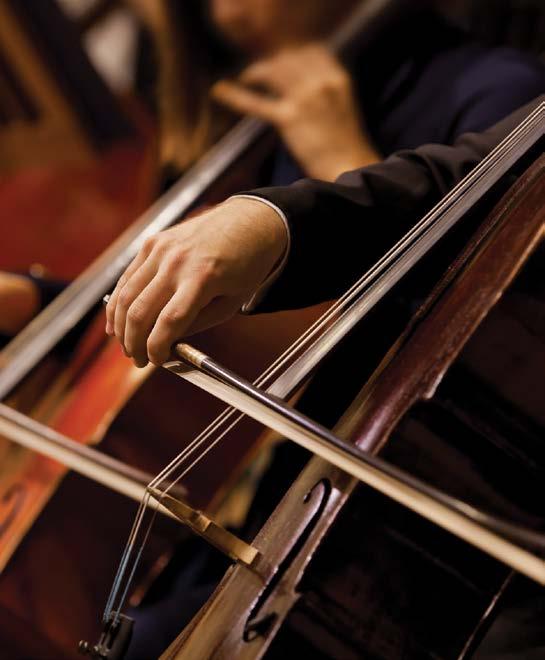




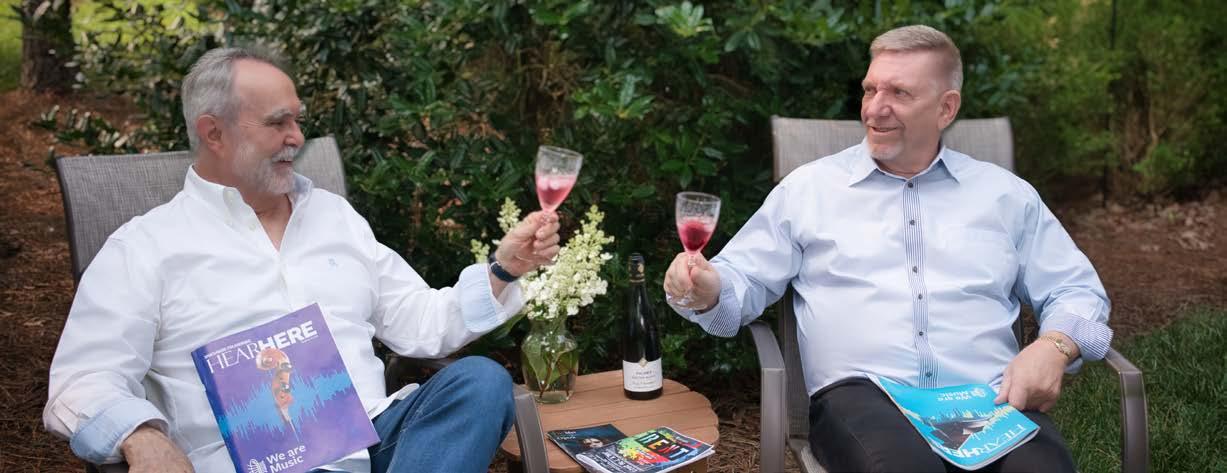
Larry Butka and Greg Murphy are true renaissance gentlemen having recently relocated to Spartanburg after a 33-year experience in South Florida. Upon moving into their new surroundings, they were quickly made aware of the Spartanburg arts scene by like-minded friends and neighbors. “The Nutcracker is a must see,” they were told, and, after viewing a performance, they decided they must support this wonderful organization! They were amazed with the community collaboration that went into producing such a truly wonderful experience, which has now become their new Christmas tradition.
As for their friendship with the Spartanburg Philharmonic, they were first invited to attend a Music Lovers’ Luncheon at the Piedmont Club last fall and became aware of the conductor search while also meeting many other Philharmonic enthusiasts. They were in awe when learning that Spartanburg has one of the oldest operating philharmonics on the East Coast (for reference: the Charlotte Symphony is 91 years old; the Atlanta Symphony is 84 years old; and the Spartanburg Philharmonic is beginning its 95th year).
Larry is a native of the New York City area and recalls skipping school at a young age and slipping into the city for a Broadway show and going on field trips to the Metropolitan Opera and the New York Philharmonic. A Duquesne University graduate, Larry is a retired CPA and CFO who does consulting part time. Larry’s home virtual assistant is always tuned to WQXR, New York’s classical music station.
Greg, a native of Johnstown, Pennsylvania, has a degree in music education, with a major in voice, piano minor
Katherine Poss Development Managerand accompanies and sings with a local chorus. Greg still enjoys singing German Lieder and has performed with the Johnstown Symphony and the Civic Light Opera in Pittsburgh, albeit many years ago!
Larry and Greg can also be found stomping their feet at Bluegrass Spartanburg, enjoying a nibble and a tipple before the Espresso series concerts, applauding the wonderful productions of the Spartanburg Little Theatre and experiencing the beauty of Ballet Spartanburg. “And all venues are just minutes from our home,” said Larry. They both enjoy cooking, gardening, museums, and travel, especially to New York City. Asked to name their favorite composers, Puccini and Sondheim came to mind, “You can’t miss with La Bohème, Turandot, Sweeney Todd and Company!”
“We are thrilled with the music curriculum outreach, especially the Link Up Program and the joy it brings to our community. After our second year in Spartanburg, we continue to be amazed at the variety of musical selections the Philharmonic offers. The board, management and musicians of the Philharmonic are indeed a rare and wonderful find, and we are looking forward to this exciting next season with our new conductor John Young Shik Concklin.”
They have both expressed their utmost thanks to the warm and welcoming residents of Spartanburg. We invite you to get to know these gentlemen this season. And, of course, we are very grateful for their support of our organization.
Merrill is proud to support the Spartanburg Philharmonic.
864.596.5474
Merrill Lynch Wealth Management
295 East Main Street
Spartanburg, SC 29302
fa.ml.com/mcleod
Merrill Lynch, Pierce, Fenner & Smith Incorporated (also referred to as “MLPF&S” or “Merrill”) makes available certain investment products sponsored, managed, distributed or provided by companies that are affiliates of Bank of America Corporation (“BofA Corp.”). MLPF&S is a registered broker-dealer, registered investment adviser, Member SIPC and a wholly owned subsidiary of BofA Corp.
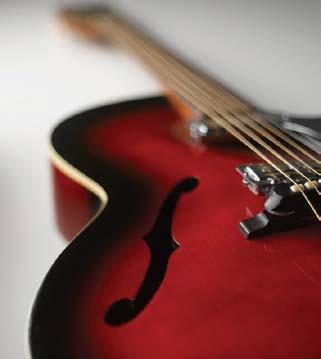
The Bull Symbol and Merrill are registered trademarks of Bank of America Corporation.
CFP Board owns the marks CFP®, CERTIFIED FINANCIAL PLANNER™, and CFP® (with plaque design) in the U.S. The College for Financial Planning Institutes Corp. owns the service marks Sports & Entertainment Accredited Wealth Management AdvisorSM, SE-AWMA℠ and the SE-AWMA℠ logo, and the certification marks Sports & Entertainment Accredited Wealth Management Advisor™, SE-AWMA™ and the SE-AWMA™ logo.
A Senior Portfolio Manager can help clients pursue their objectives by managing on a discretionary basis his own Personalized or Defined Strategies, which may incorporate individual stocks and bonds, Merrill model portfolios, and third-party investment strategies. A Senior Portfolio Manager may make their strategies available to clients working with other Merrill advisors. © 2023 Bank of America Corporation. All rights reserved. MAP5272720 | AD-06-23-0638 | 470944PM-0123 | 06/2023
Friday Oct 27 7:30 pm

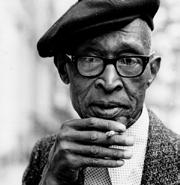





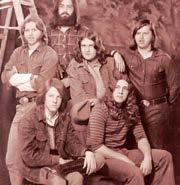
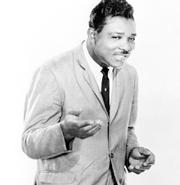
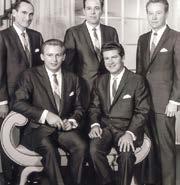
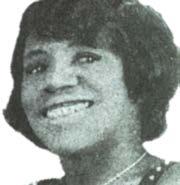
“Music Trail Live!”, produced by Randy Foster, is a celebration of nearly 200 years of Spartanburg’s rich music history. This electrifying night of music and fun will feature fifteen different acts performing a wide variety of music—country, gospel, soul, rock’n’roll, jazz, bluegrass, and more— honoring artists on the Spartanburg Music Trail (see page 60).


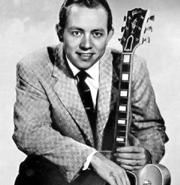

This concert is sponsored by:

This fall performance begins with the traditional sounds of an Irish tune by Thomas Moore. Using a variety of music styles, this piece provides an exciting opening to our season. We then transition to the fierce, driving rhythms of Toccatina by William Hofeldt. Following the intensity of this piece the orchestra sends the audience through a reflective journey with A Silent Echo by George
Sweet. The lushly rich harmonies of Sweet’s work take the audience through an emotionally stirring musical experience. Finally, the orchestra will end with the epic sounds of Greisinger’s Legends of Glory for one last invigorating music number.
- Josh MillerSelecting music for the SPYO Symphony Ensemble is no easy task. I must consider the level of students (both returning and new) and balance that with the rehearsal schedule. The Danse Bacchanale, a piece from Camille Saint-Saëns’s grand opera Samson and Delilah was the foundation of this concert. The students were ready to be challenged by this masterwork of technical musical escapades and storytelling. The dramatic music will be enjoyed by both the students and the audience.
A contrasting piece was selected to change the mood and style for the listener and to expand on musicality for the musicians. Originally a choral piece, composer



Eric Whitacre created an orchestral version of Lux Aurumque. This lovely piece captures the beauty of light while challenging the students’ stamina and patience for creating beautiful musical moments.
The final piece to complete the program needed to be filled with energy and adventure while still supplying the musicians with some tricky ensemble and solo moments. Nikolai Rismky-Korsakov’s Capriccio Espagnol will showcase the dynamic talent of the SPYO Symphony Ensemble.
- Susie LalamaSYMPHONY CONDUCTOR
Susana M. Lalama, Ph.D., is Associate Professor of Music Education and Director of the Petrie School of Music at Converse University. Dr. Lalama teaches undergraduate and graduate courses in instrumental music education and conducting, and supervises student teachers in instrumental music. She also advises graduate music education master’s theses and projects. Prior to her appointment as Director of the Petrie School of Music, she served as the Conductor of the Converse Wind Ensemble.
Dr. Lalama grew up in Miami, Florida, and pursued her music education degrees from the University of Miami. Prior to her graduate degrees, she served as Director of Bands at Barbara Goleman High School in Miami Lakes, where under her direction, the wind ensemble, jazz band, and marching band consistently received superior ratings at district and state music performance assessments.
When not teaching in the classroom, Dr. Lalama serves as the adviser of the Collegiate NAfME Converse Chapter. She also serves on the South Carolina Music Educators Association executive board as Past-President of the Higher Education Division and is the Editor of the South Carolina Musician, the official publication of SCMEA.
Dr. Lalama is an active scholar, presenter, and researcher in music education. She has presented music education workshops on topics such as strategies for teaching intonation, classroom management for large ensembles, the student teaching experience, and artistry in conducting. Her research interests are centered on caring climates, student social behaviors, and music teacher education.
PRELUDE CONDUCTOR
Although he didn’t originally set out to become a teacher, he received his Bachelor of Music degree in Music Education from Furman University. While in college, his plan was to become a dentist until he finally listened to the encouragement of those around him to consider teaching. The choice to become an orchestra teacher turned out to be one of the greatest decisions of his life. After graduation, Dr. Miller began his career in Anderson School District One teaching orchestra for grades 5-12.
In 2016, he moved back to his hometown and joined the faculty at Spartanburg School District Two. As a music educator, he holds two main philosophies: kids who trust you can learn anything, and fundamentals are key to musical success. He currently teaches at Boiling Springs Middle School where his program, his students, and his teaching have continued to grow each year.
In 2021, he was selected by his peers and administration to serve as Teacher of the Year. And this past year, he received the honor of being the WYFF News 4 Teacher of the Year. During his years as an orchestra teacher, his performance groups have earned numerous awards. Dr. Miller and his wife (Raven) currently reside in Inman, SC, with their son (Asher) and daughter (Ayla). He enjoys watching as much Netflix as possible and spending time with his family.

The Youth Orchestra Celebrates 5 Years

Come to a Spartanburg Philharmonic Youth Orchestra concert, and you’ll be blown away by what you hear.

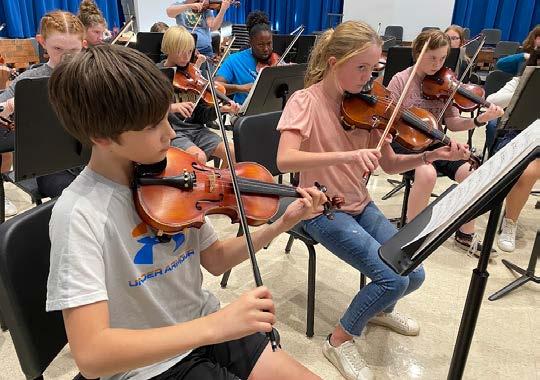
In 2018, the Spartanburg Philharmonic board of directors set a goal to realize a long-term desire: found a youth orchestra for Spartanburg and foster the impressive talents of musically-inclined students. The undertaking required significant effort from Spartanburg musicians and the community, but as word spread, the board was met with overwhelming support. “For almost a year we reached out to sister organizations, music educators, and members of the Spartanburg Philharmonic to get this group off the ground,” says Helen Tipton, the Philharmonic’s education committee chair.
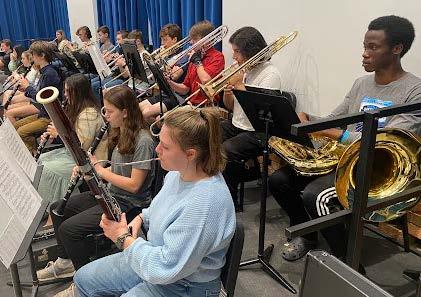 Molly Cribb Contributing Author
Molly Cribb Contributing Author
Helen is now the Youth Orchestra’s co-manager alongside Bob Borden, and the orchestra itself has evolved into two separate orchestras. The Symphony ensemble, a full orchestra including woodwinds and percussion sections, is open to students in grades eight through twelve, while the Prelude Ensemble caters to younger students in grades six through nine. Fall 2023 marks the program’s fifth season.
Spartanburg schools are blessed with strong music education programs, but for some students, music in a school setting is not enough, and they jump at the chance to join SPYO. Dr. Susie Lalama, the Symphony conductor and one of its founders, describes the program’s goal as “a vision to go out into the community, reach our students,
inspire more students to play music that they maybe aren’t able to play at school.”

Dr. Joshua Miller, the new Prelude conductor, sees his position as an opportunity to expand students’ awareness of the musical world beyond graduation. “I want to highlight to students that there is more to the world of music than what they do in school. What they do in school is great, but it’s also attached to school, and sometimes students feel that once school ends, that’s all there is to music.”
Ryan Campbell, a rising sophomore at Boiling Springs High School and violinist in the SPYO, is one student who gets that message. Ryan joined the Prelude Ensemble as an eighth grader. He plans to study music education in college and pursue a teaching path. For Ryan, the Youth Orchestra offers a more rigorous musical environment. “The philharmonic is a great chance to play harder stuff I normally don’t get to play,” he says.
SPYO also gives students like Ryan the chance to bond with like-minded young people from different schools. He looks
forward to rehearsals every Sunday as a chance to spend time with his friends, as well as to learn new pieces.
Younger and older students all get a chance to grapple with challenging works, including ones composed specifically for their skill levels. And while Dr. Lalama and Dr. Miller both value the importance of classical compositions and expect their students to be exposed to their intricacies, they are always on the hunt for new composers.
Students also get the chance to audition for concertos every season, and they never fail to disappoint. Ryan hopes to audition for a concerto next season with Mozart’s Third Violin Concerto, a piece he’s been working on for several months now. Other students have performed concertos featuring instruments such as trumpet and piano.
SPYO presents its fall concert on October 29, 2023, its winter concert on February 4, 2024, and its spring concert on April 21, 2024. Concerts are Sundays at 3 pm in Twichell Auditorium.



The Spartanburg Philharmonic’s Watch Party Pass is a Hot Ticket at Eden Terrace!

About 30 minutes before show time, residents of Eden Terrace begin to fill their community room and a lively sound of chatter begins. In the front of the room is a large screen television with the Spartanburg Philharmonic logo.
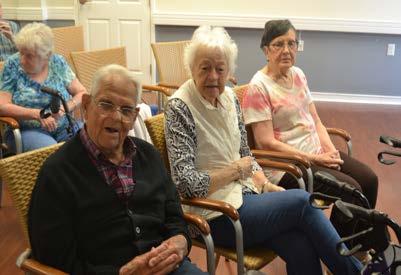

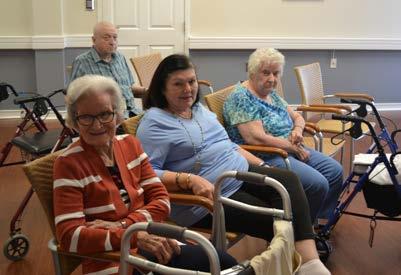
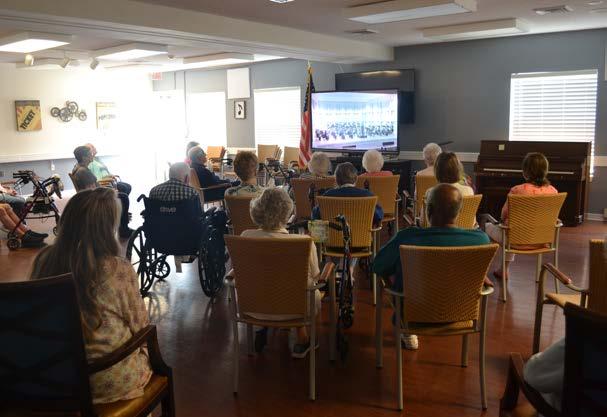
The room fills with about 30 residents and they are greeted by a member of the Spartanburg Philharmonic’s team.
For the next 45 minutes, the group is watching and listening to the recorded live-stream of the Spartanburg Philharmonic’s previous performance.
“It’s amazing that we can have 25-30 residents attend a high-quality virtual concert right in our building. If I took them to the concert, it would only be about 11 residents experiencing the concert. I have watched their faces and know that they really are enjoying the recorded performances.” Cindy Moore, Eden Terrace Engagement Director.
Eden Terrace Residents’ Comments:
“This is wonderful, to be able to watch right here in our building is just wonderful.”
“The concerts are really good. We are glad you bring this to us.”
“We appreciate being able to 'attend' these concerts."
Being able to deliver pre-recorded quality performances like our Zimmerli Concert Series to members of our community where they feel most comfortable is something the Spartanburg Philharmonic is proud to offer. If you’re interested in learning more about our Watch Party Pass for your group, please contact Katherine at:
katherine@spartanburgphilharmonic.org
SpartanburgPhilharmonic.org/msi


The "Music Sandwiched In" program features 22 free concerts each year held in the Barrett Room of the Spartanburg County Downtown Library. This 25+ year partnership enriches the lives of the intergenerational population of attendees. Over its span, thousands of individuals have enjoyed many genres of music including jazz, bluegrass, classical, and rock. During "Music Sandwiched In" the doors of the Barrett Room are left open, and the 105,000 square foot library is filled with music, laughter, and applause. Attendees are encouraged to bring their own lunch to enjoy the concert or to purchase a lunch on site. All are welcome!

(see page 23 for more details)
SpartanburgMusicTrail.com
Some cities celebrate their war heroes, others their sports stars, but in Spartanburg, it’s all about our musicians. Head out on the Spartanburg Music Trail, a 30-minute outdoor walking tour of the city’s incredibly robust music history. With your GPS enabled smartphone, you’ll be directed to each colorful marker to learn about the artists and hear the music that lifted them onto the national stage. You’ll also discover opportunities for side trips to further explore our musical heritage.
The Spartanburg Music Trail honors musicians from Spartanburg who have made a national or international impact in the world of music. The stops highlight artists in such genres as country, gospel, soul, rock ‘n’ roll and more. Ultimately, the trail will circle the downtown as new inductees are added.
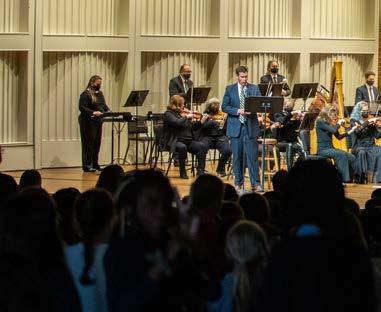
SpartanburgPhilharmonic.org/linkup
For more than 15 years, the Spartanburg Philharmonic has partnered with Carnegie Hall's Weil Institute to present Link Up, a program that works with local communities to explore orchestral repertoire and fundamental musical skills, including creative work and composition, through a hands-on music curriculum.
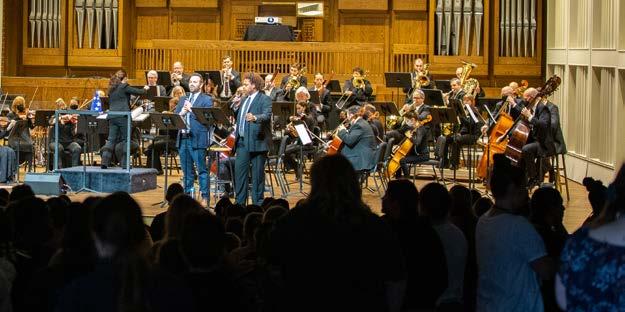
Link Up addresses the urgent need for music instruction and resources by providing a free, high-quality, yearlong curriculum that teachers can implement, along with classroom materials, online video and audio resources, and the professional development and support necessary to make the program an engaging experience for youth.
The Spartanburg Philharmonic utilizes Link Up to provide a music curriculum to all 4th graders in Spartanburg County. This means over 4,000 youth join the Philharmonic in Twichell Auditorium each Spring for a participatory concert like no other!

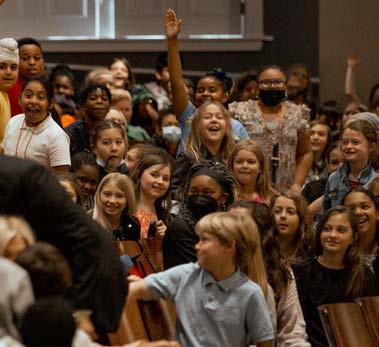
SpartanburgYouthOrchestra.org
The Spartanburg Philharmonic Youth Orchestra was founded in 2019 to bring together the best young players from across the Upstate as a core education program of the Spartanburg Philharmonic. Now composed of two high performing ensembles, the SPYO serves over 150 students in grades 6th - 12th each year.

The Youth Orchestra provides a place where musicallyinclined students learn to master their instruments and collaborate with others to produce three highquality performances each year. Working with the SPYO challenges talented young musicians to grasp difficult repertoires and perform at a higher level than what is possible in their school orchestras. (see page 53 for more details)









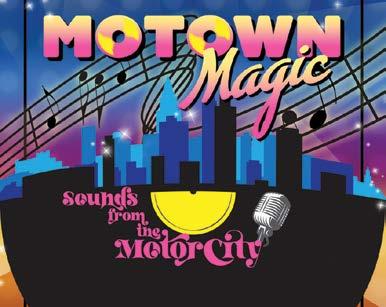







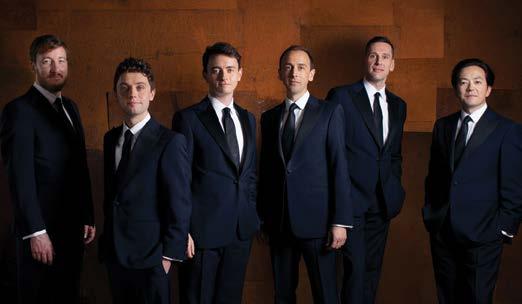

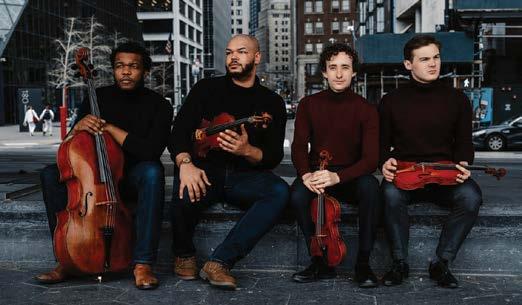

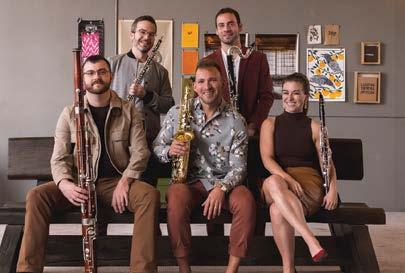

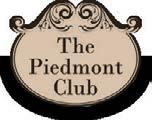

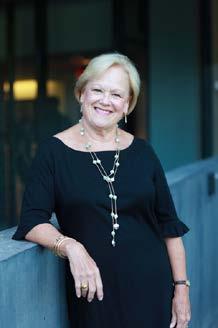







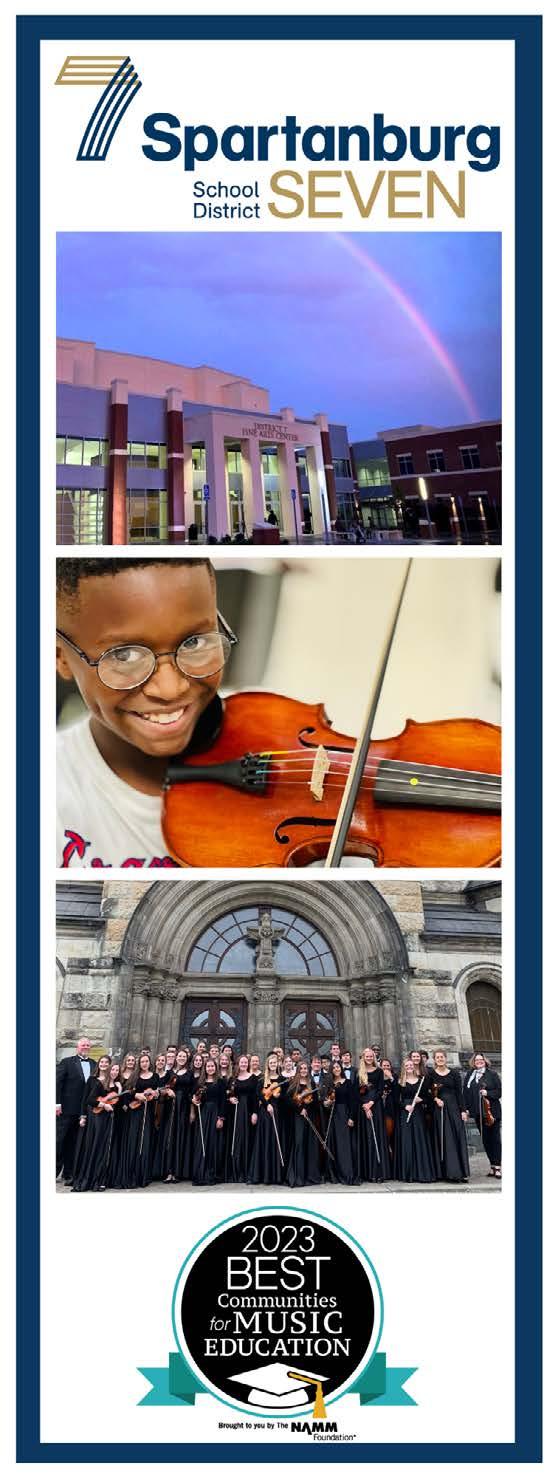
Bank of America recognizes the Spartanburg Philharmonic for its success in bringing the arts to performers and audiences throughout the community. We commend you on creating an opportunity for all to enjoy and share a cultural experience.
Visit us at bankofamerica.com/about.
